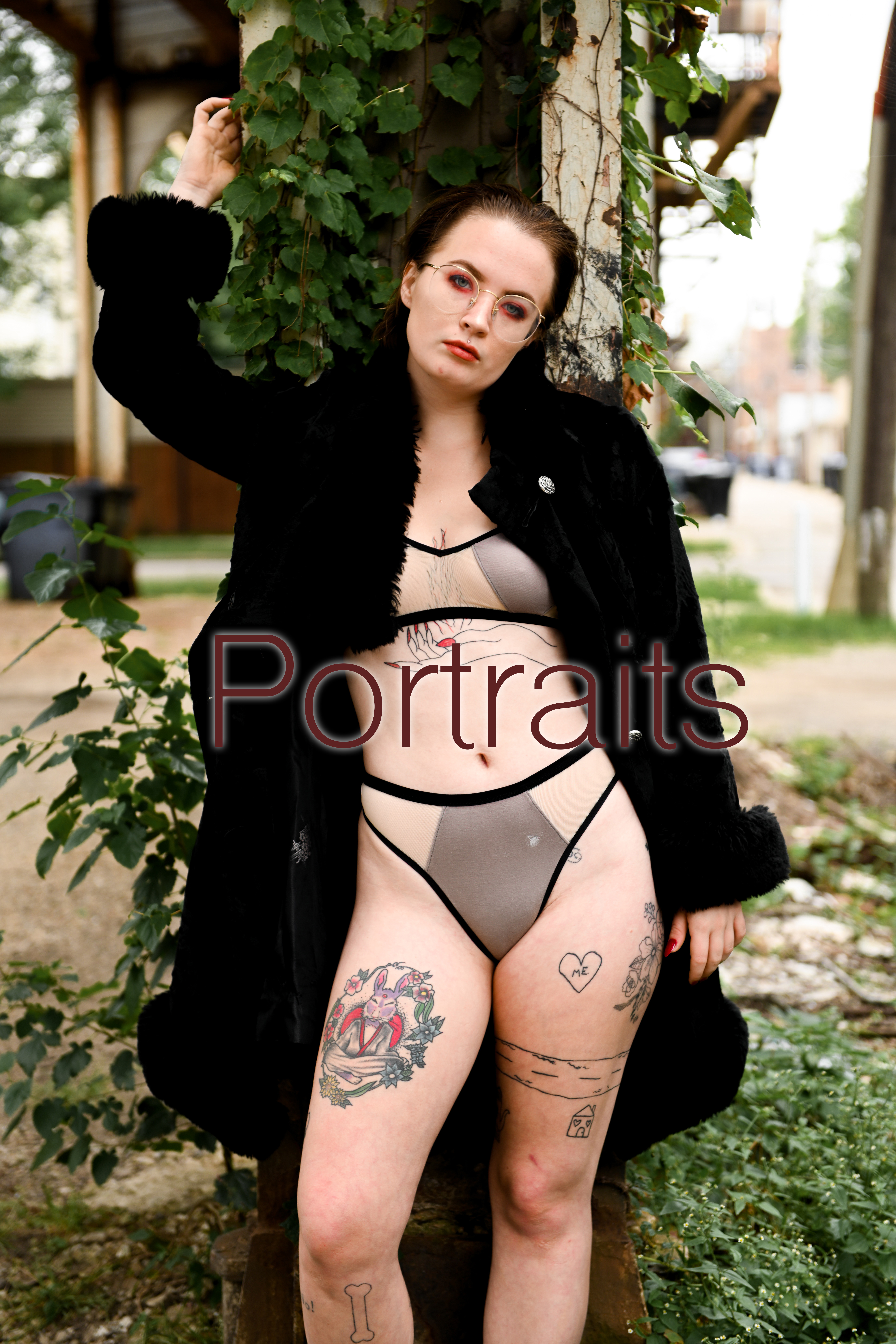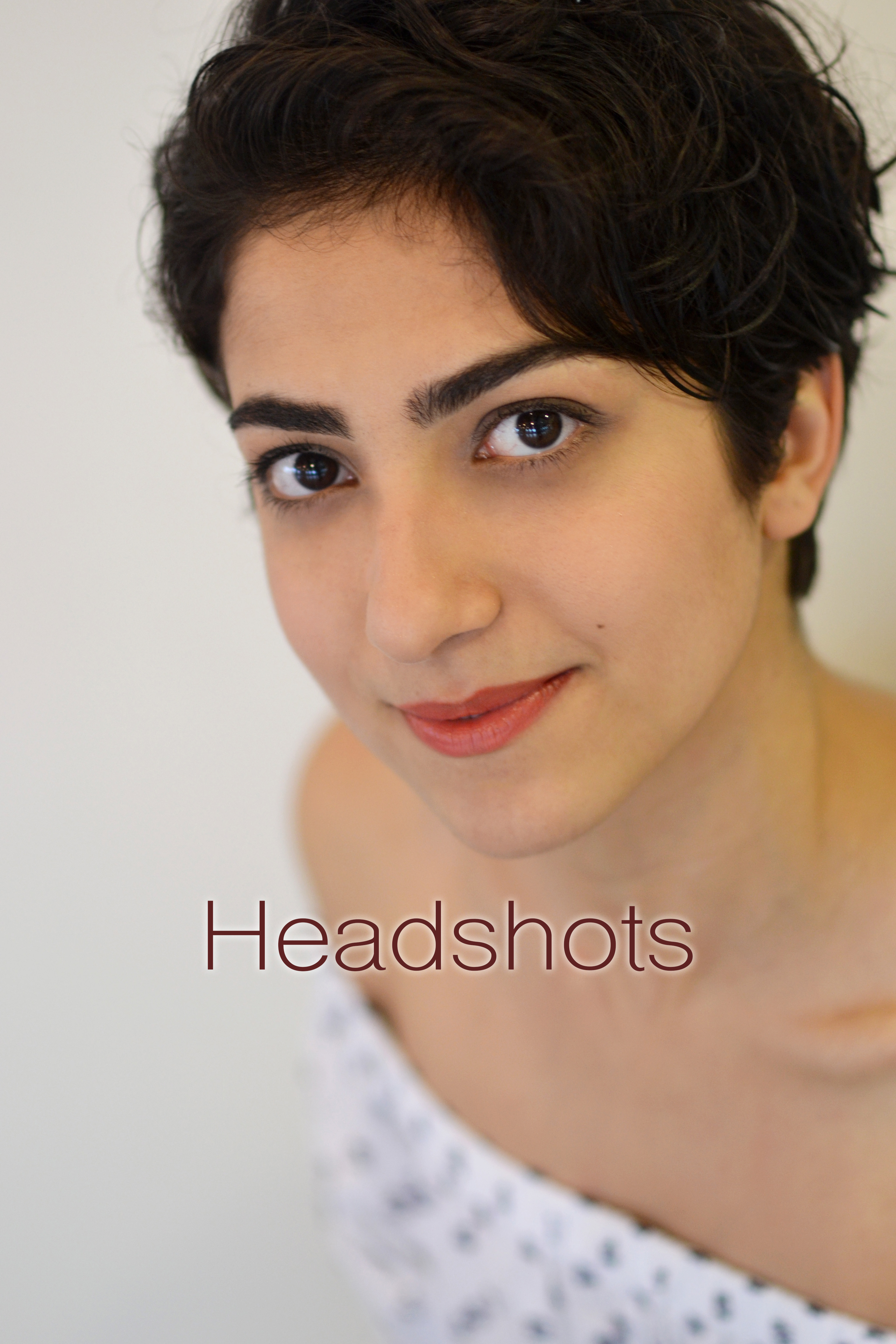Research
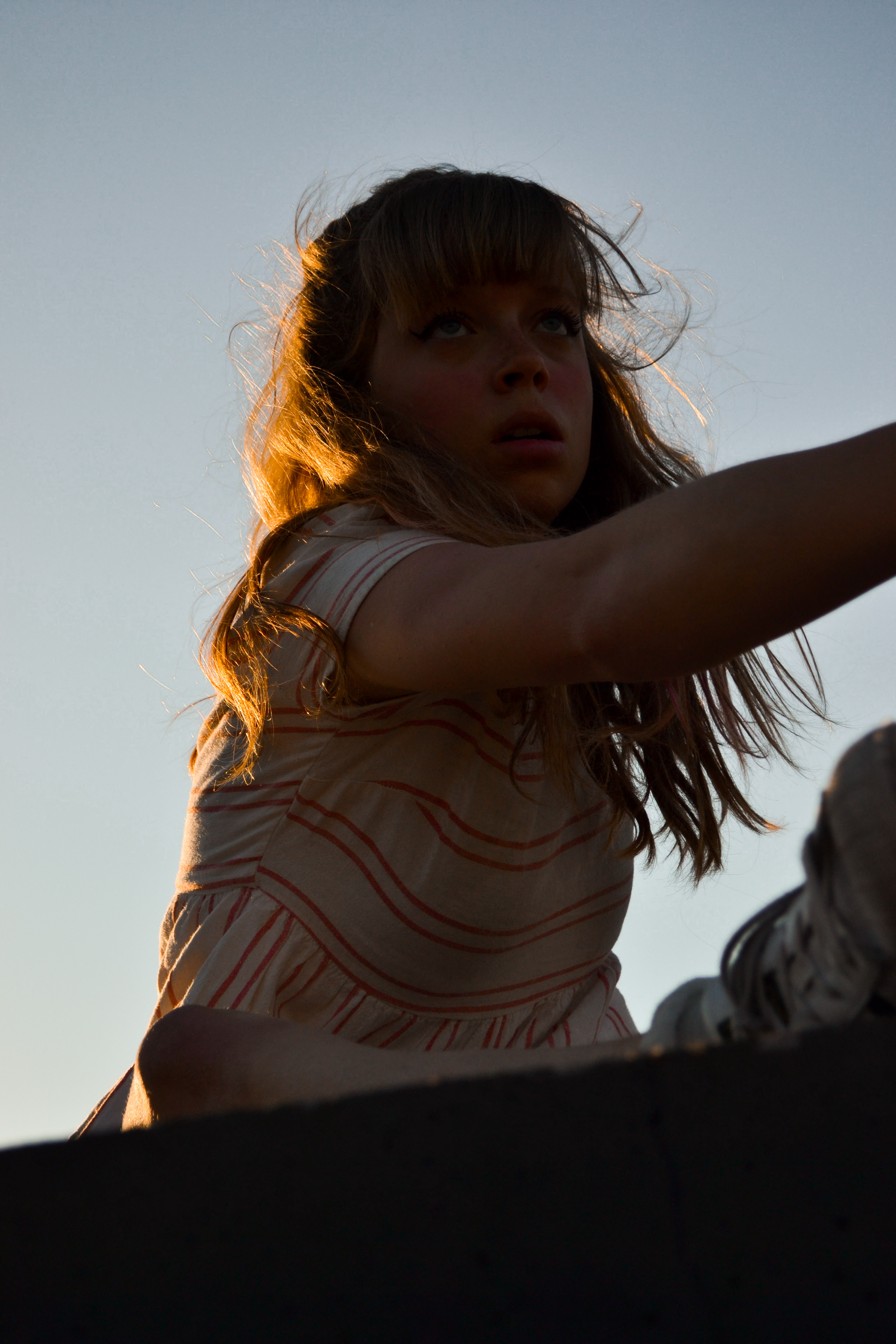
POST MEMORIAM
Post Memoriam
PERFORMANCE
This multimedia dance perforamance is a BFA Distinction Thesis. The work explores a humanist narrative arc of World War II and adjacent crimes against humanity along with their contemporary implications through dance, video and photography.
Dance as a corporeal medium forces an audience to look into the eyes of another human being and confront their own complicity.
“In effect, after 1945 poetry is an act of defiance. A quixiotic refusal to descend into silence.” - Jay Winter
“In effect, after 1945 poetry is an act of defiance. A quixiotic refusal to descend into silence.” - Jay Winter
“Erbschuld” - Collective National Guilt
Made in collaboration with Kathleen Greer
ENTRANCE MONTAGE
Frank Capra’s Why We Fight (1942), the liberation of Dachau (1945), Leni Riefenstahl’s Triumph of the Will (1935), original D-Day footage (1944), a Rudolph Hess Rally in Berlin, Germany (2018), Pennsylvania and Georgia Neo-Nazi ralies (2016 and 2018).
dance video footage by Mason Chapello









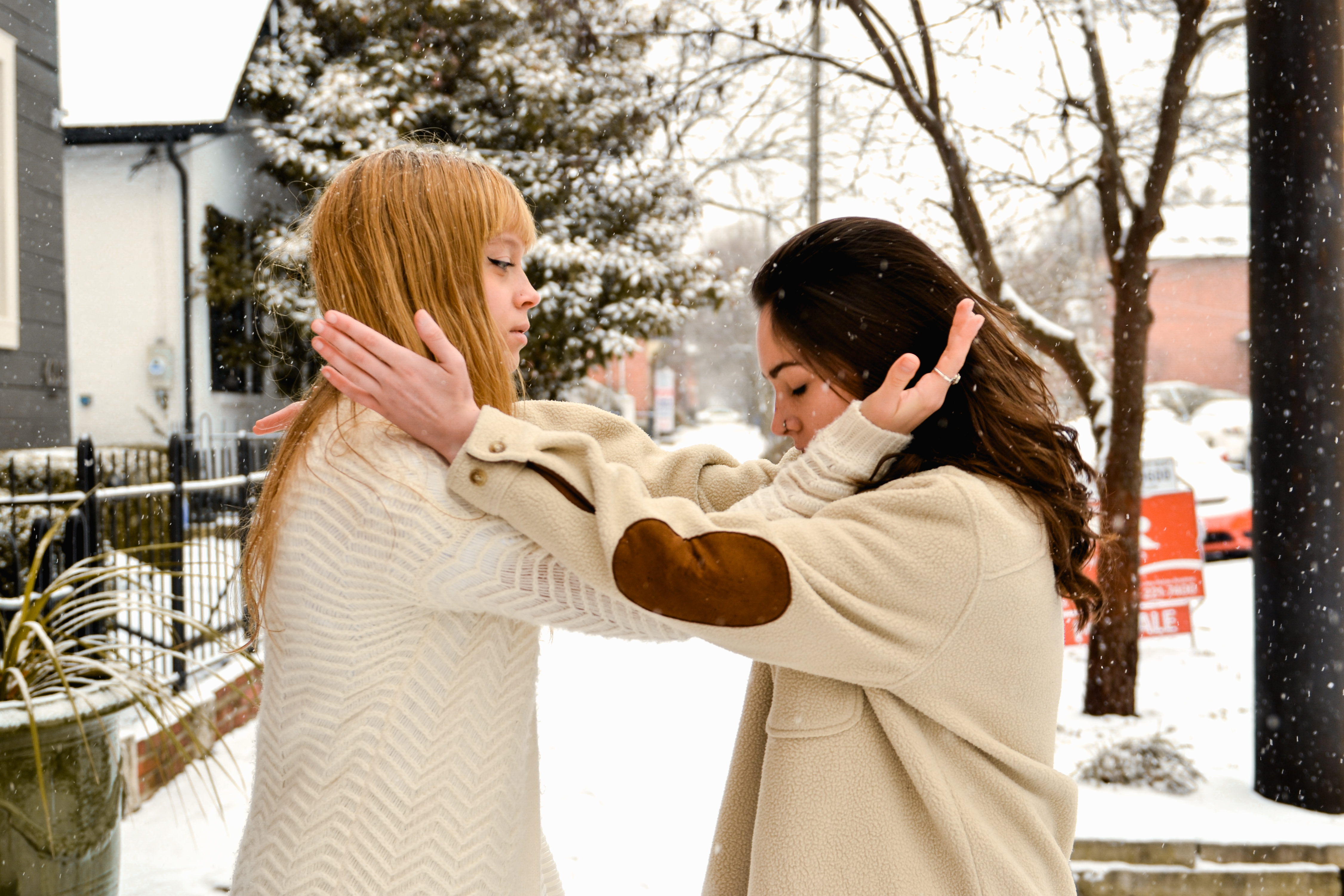




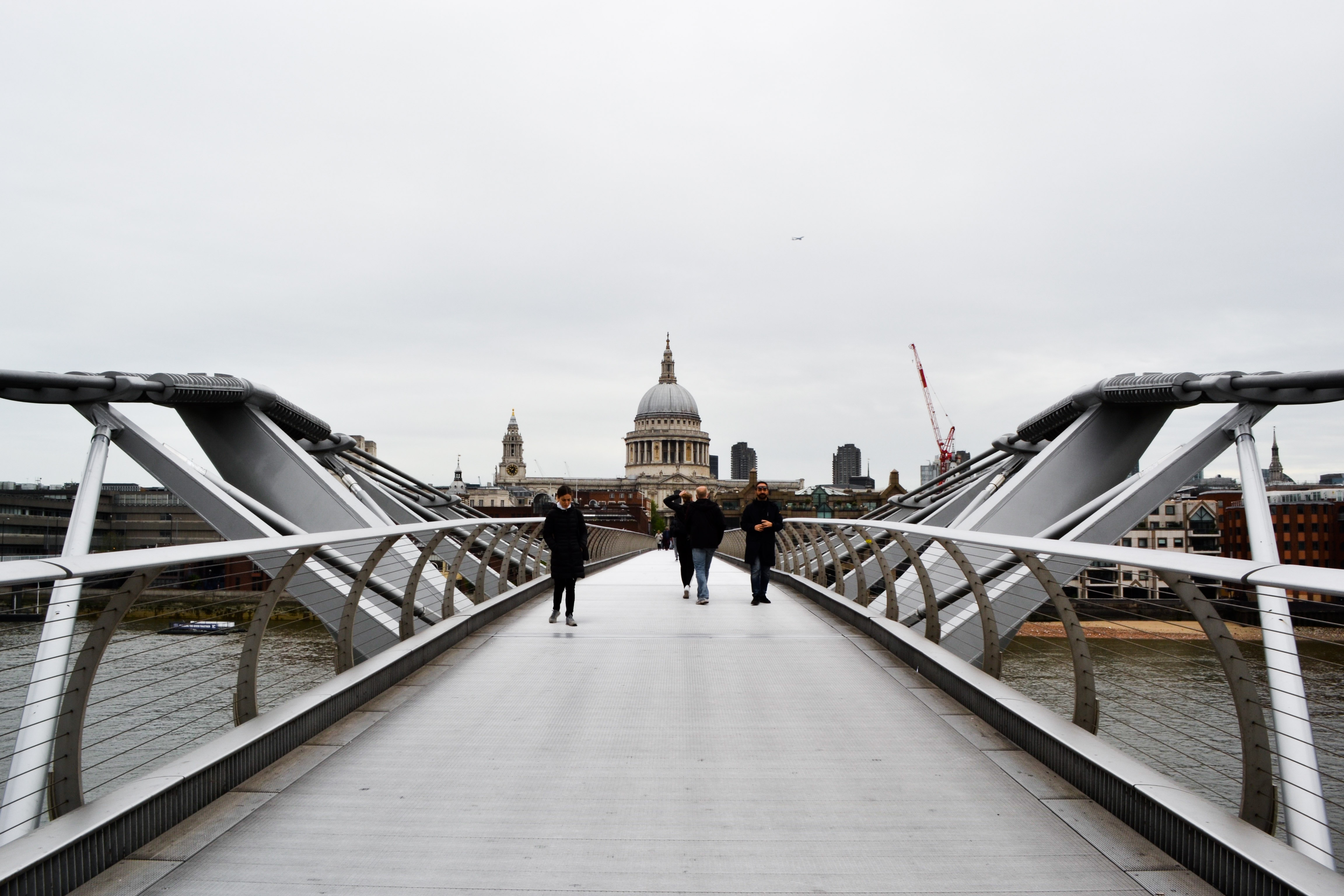

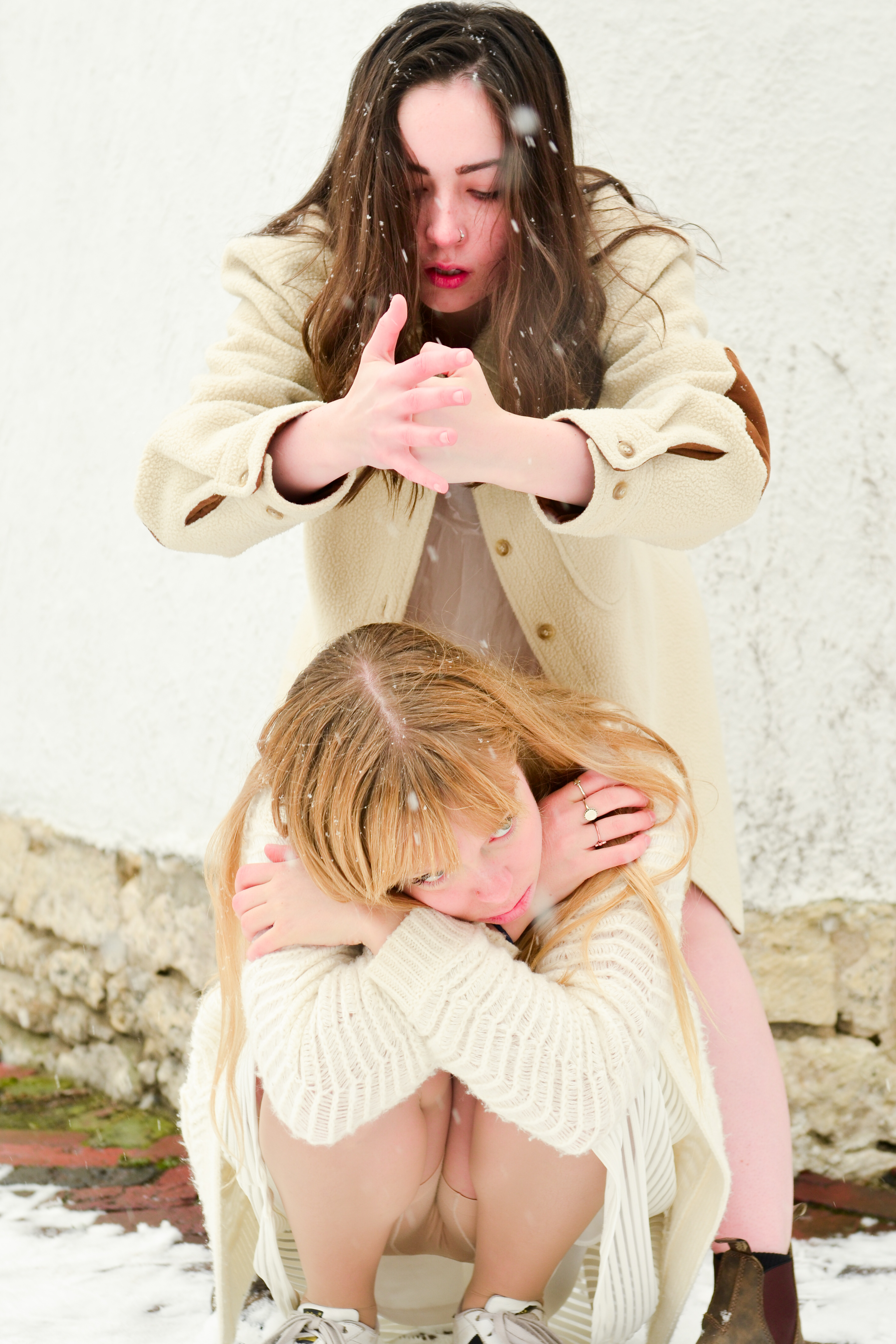


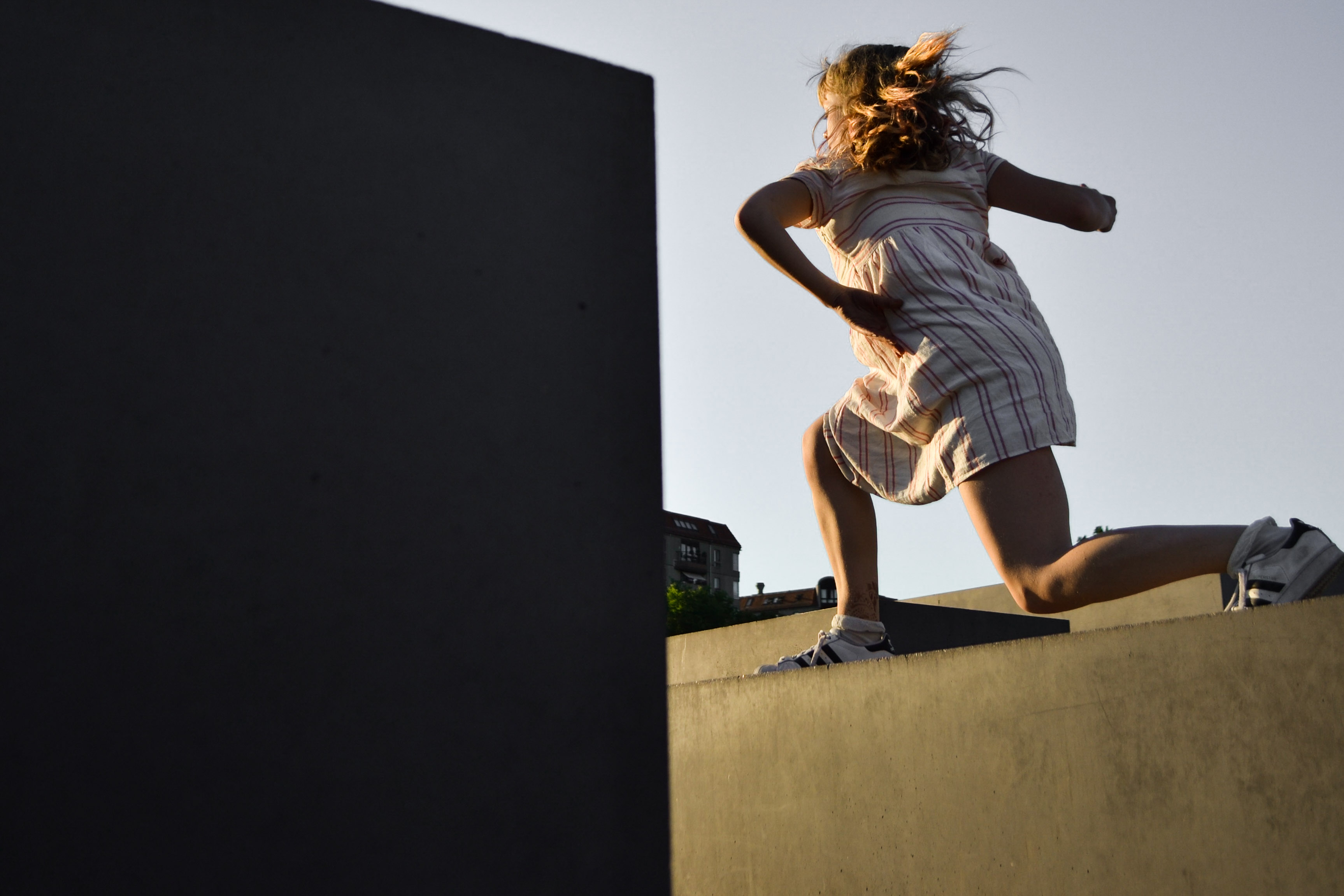
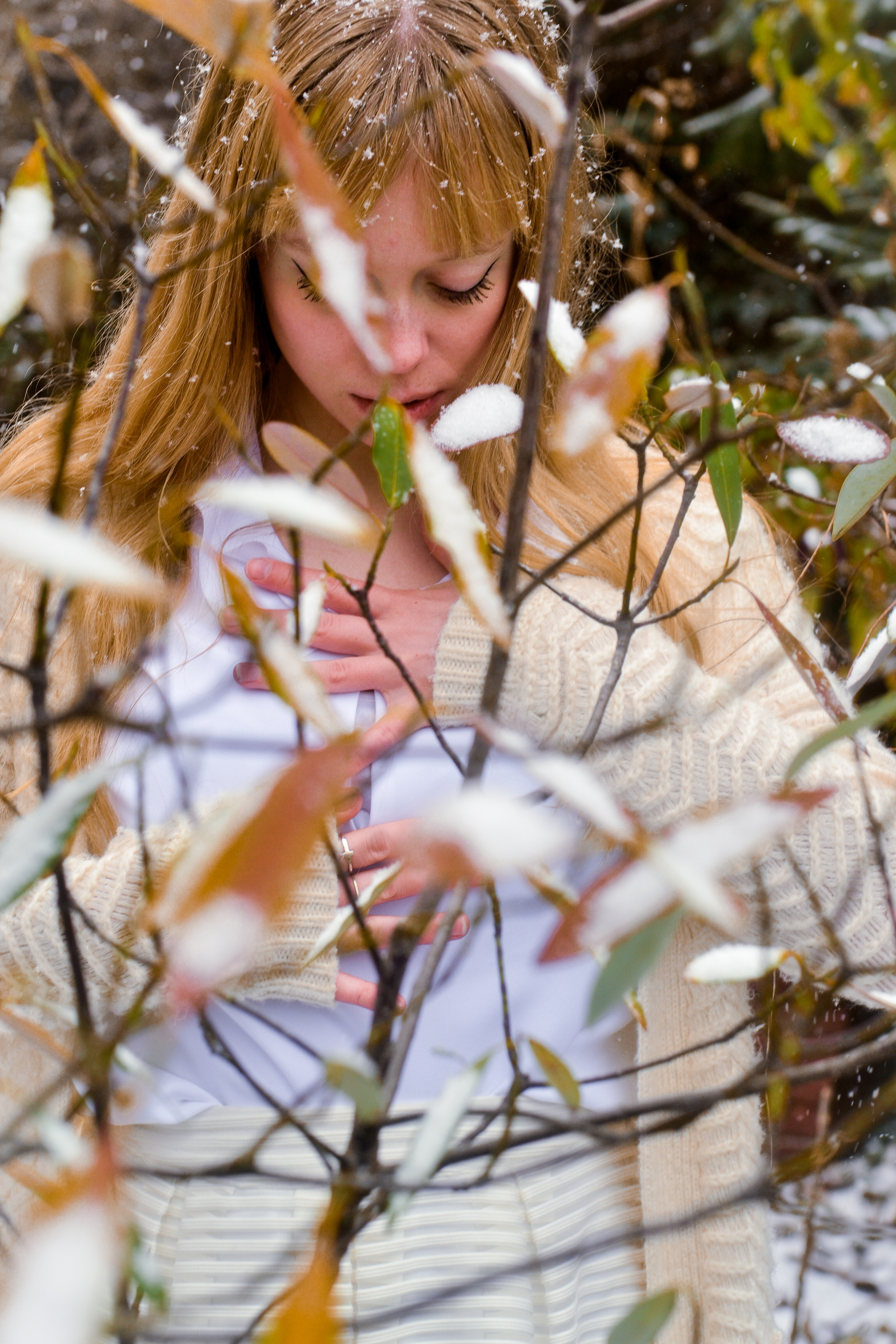



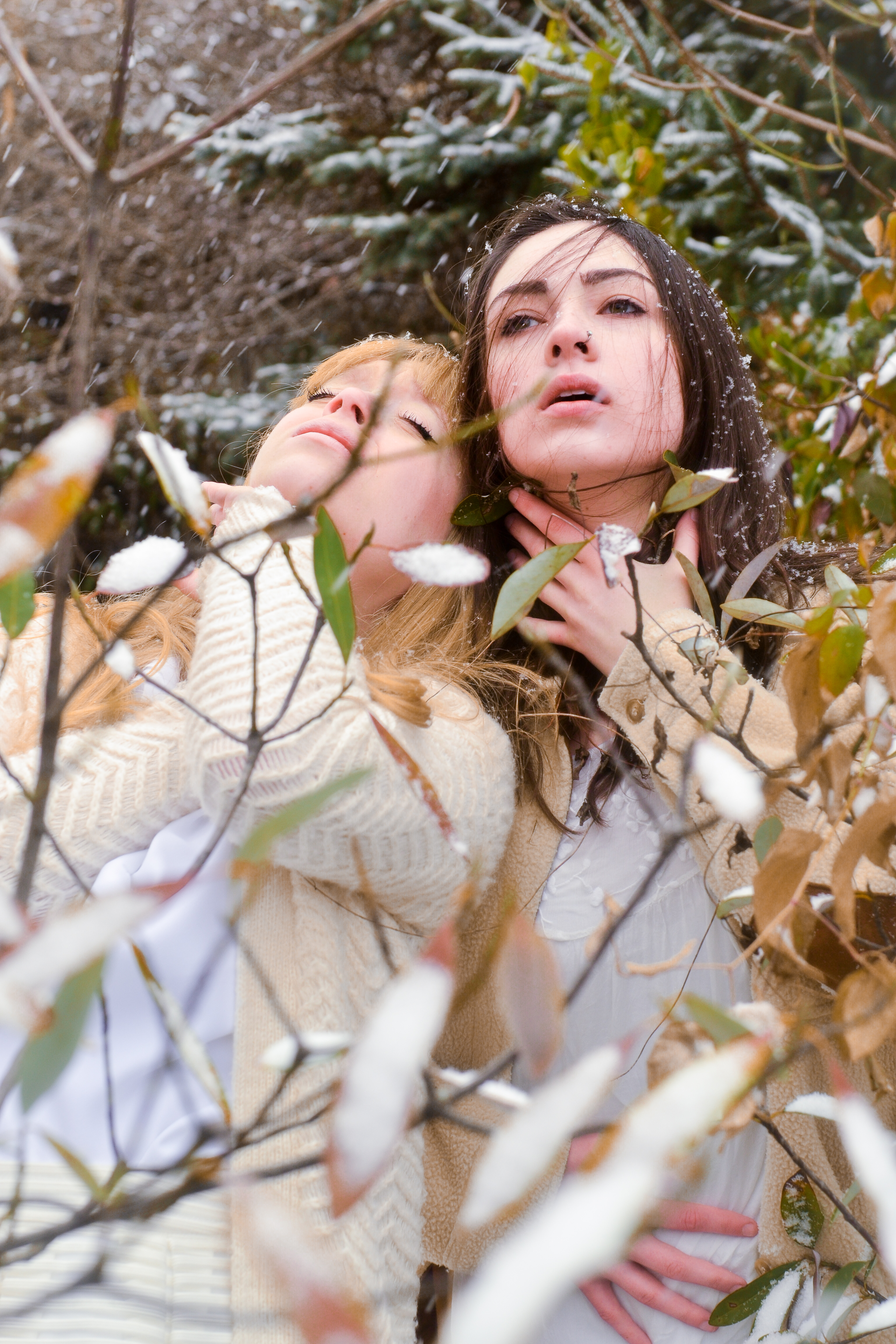
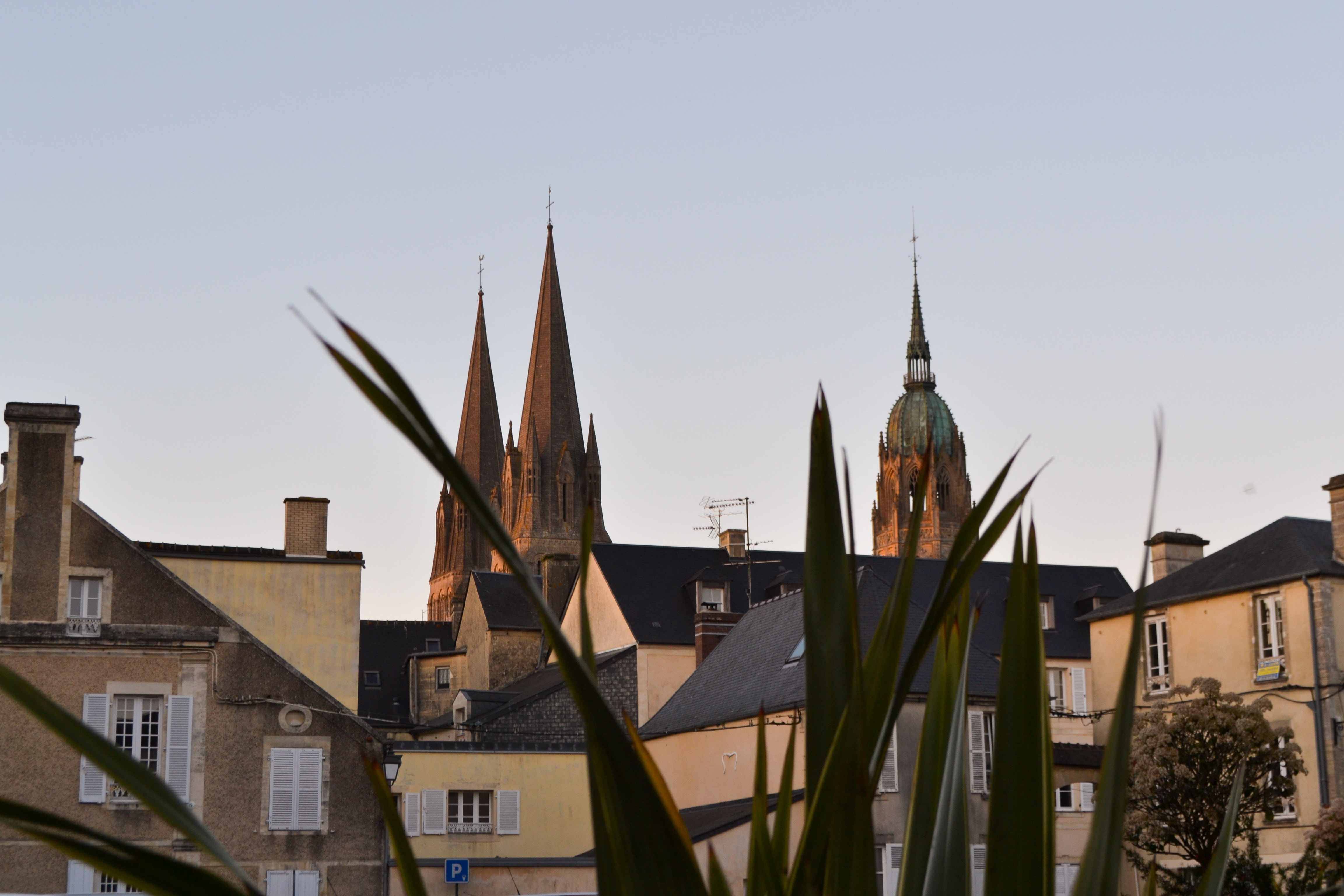

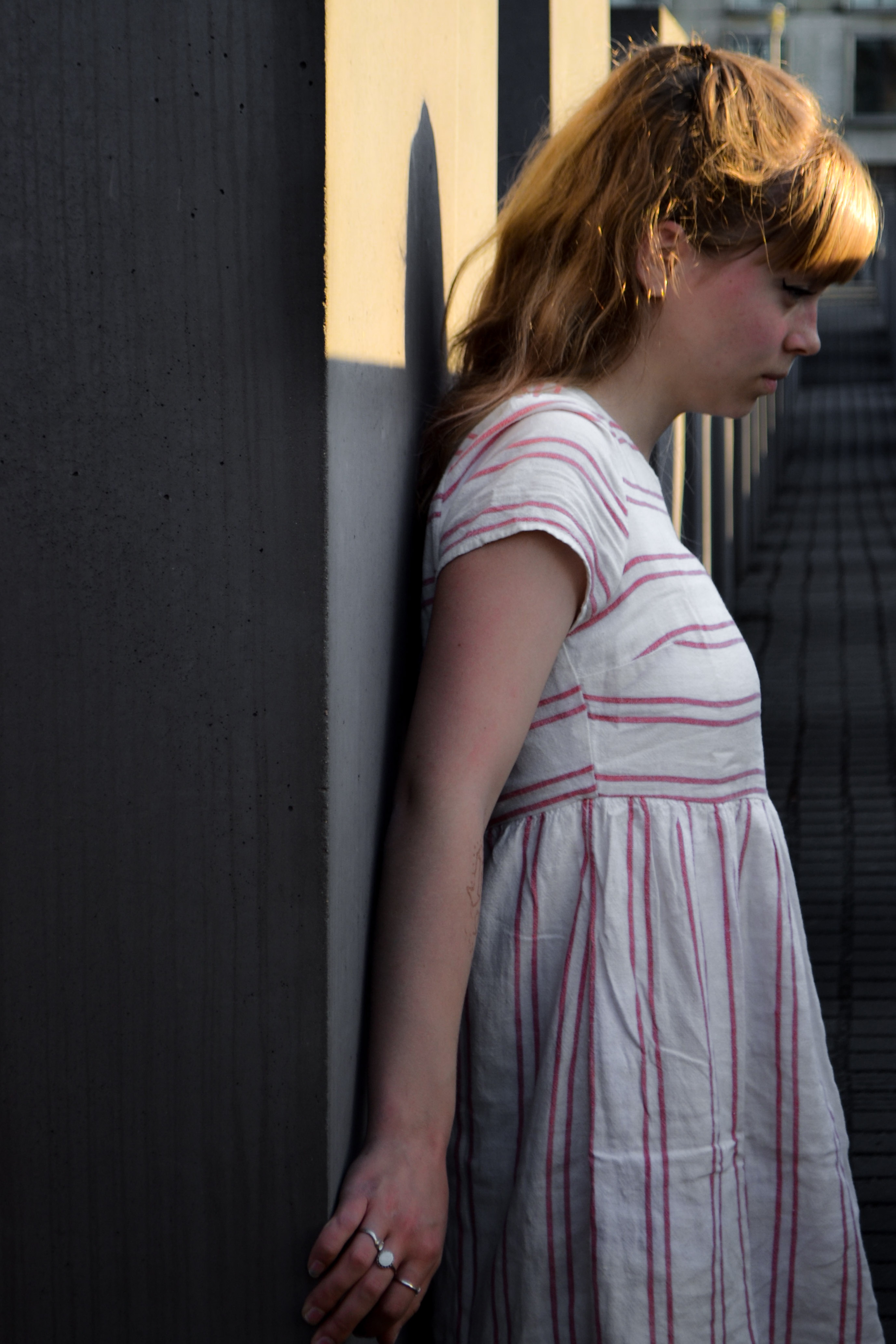
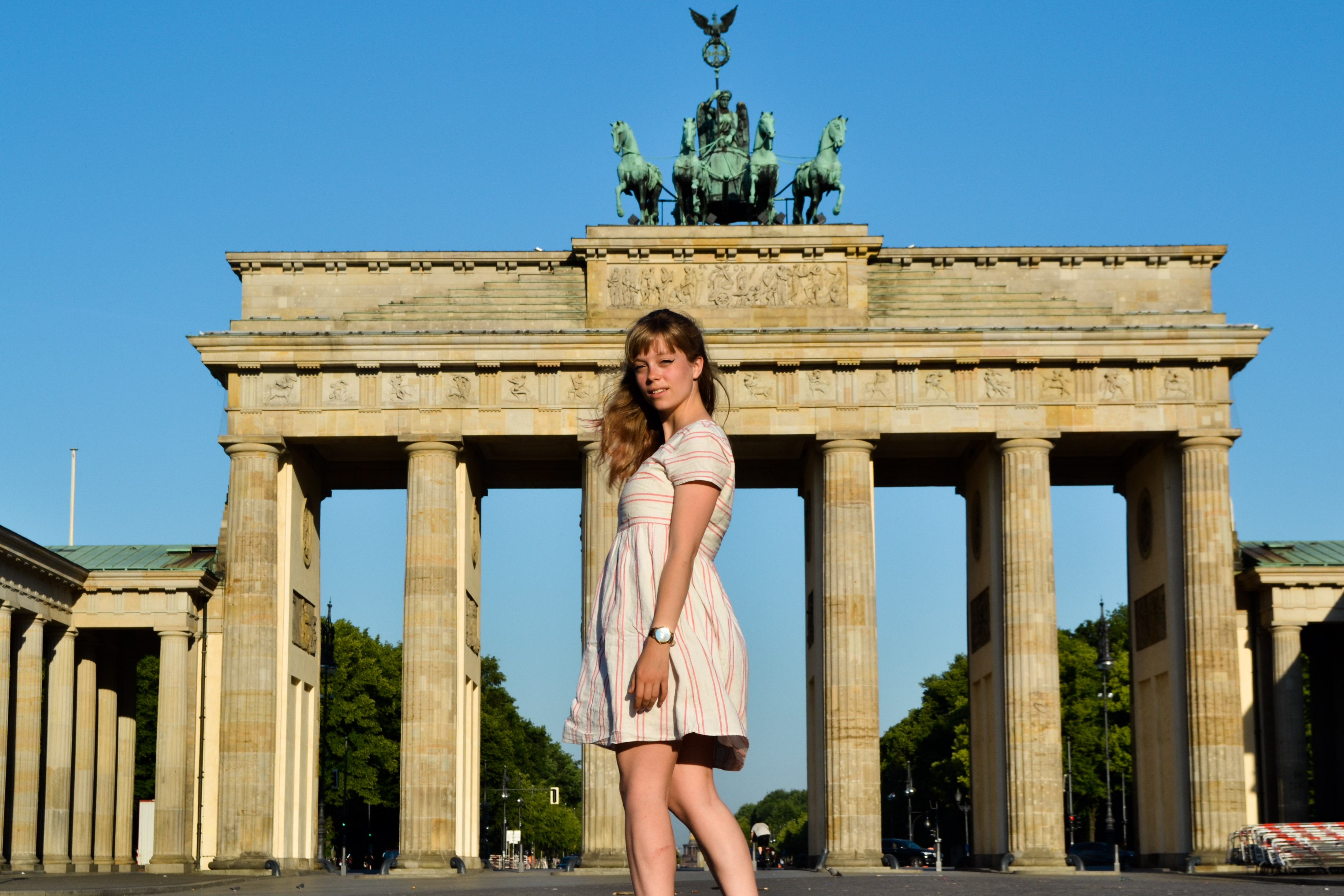

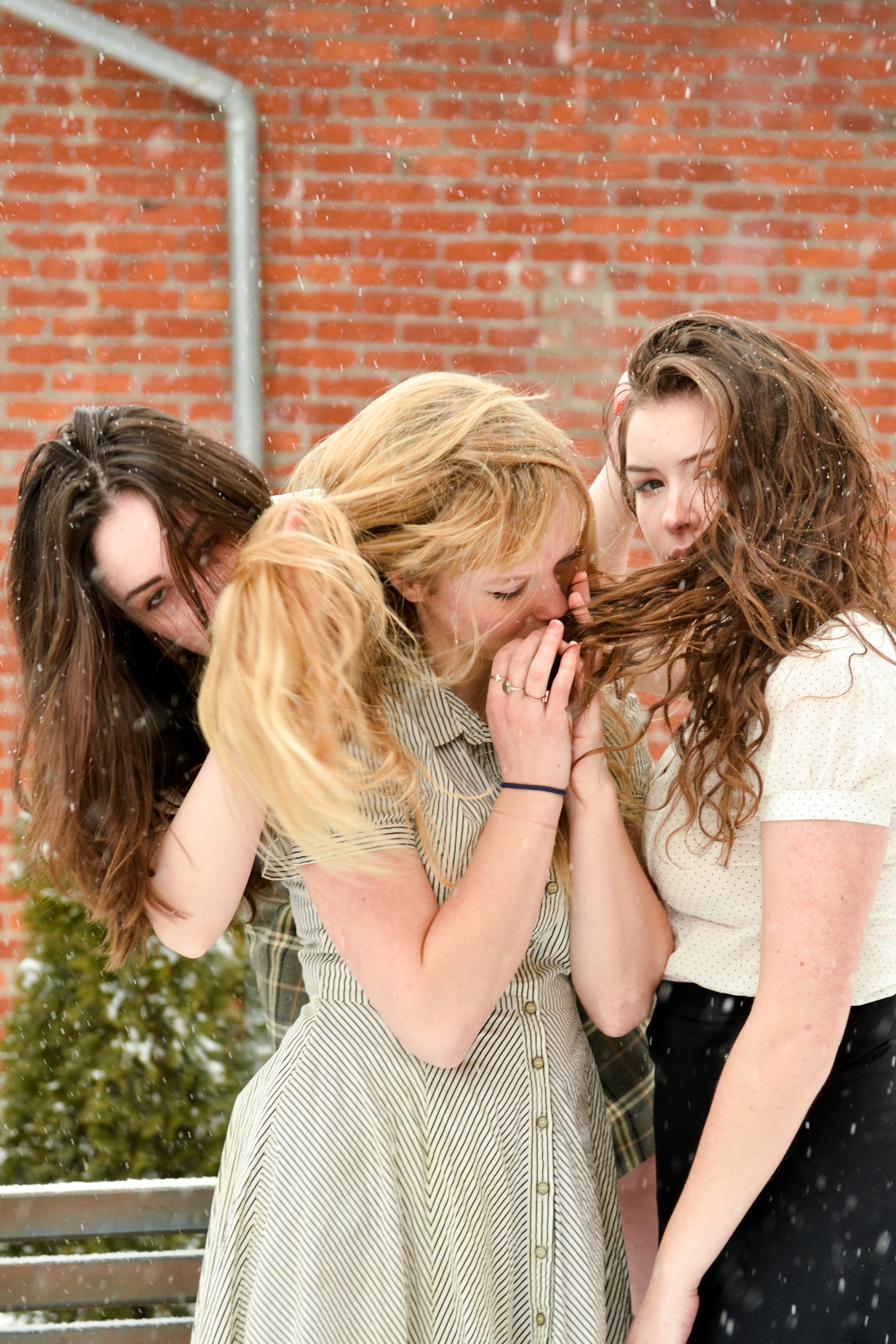


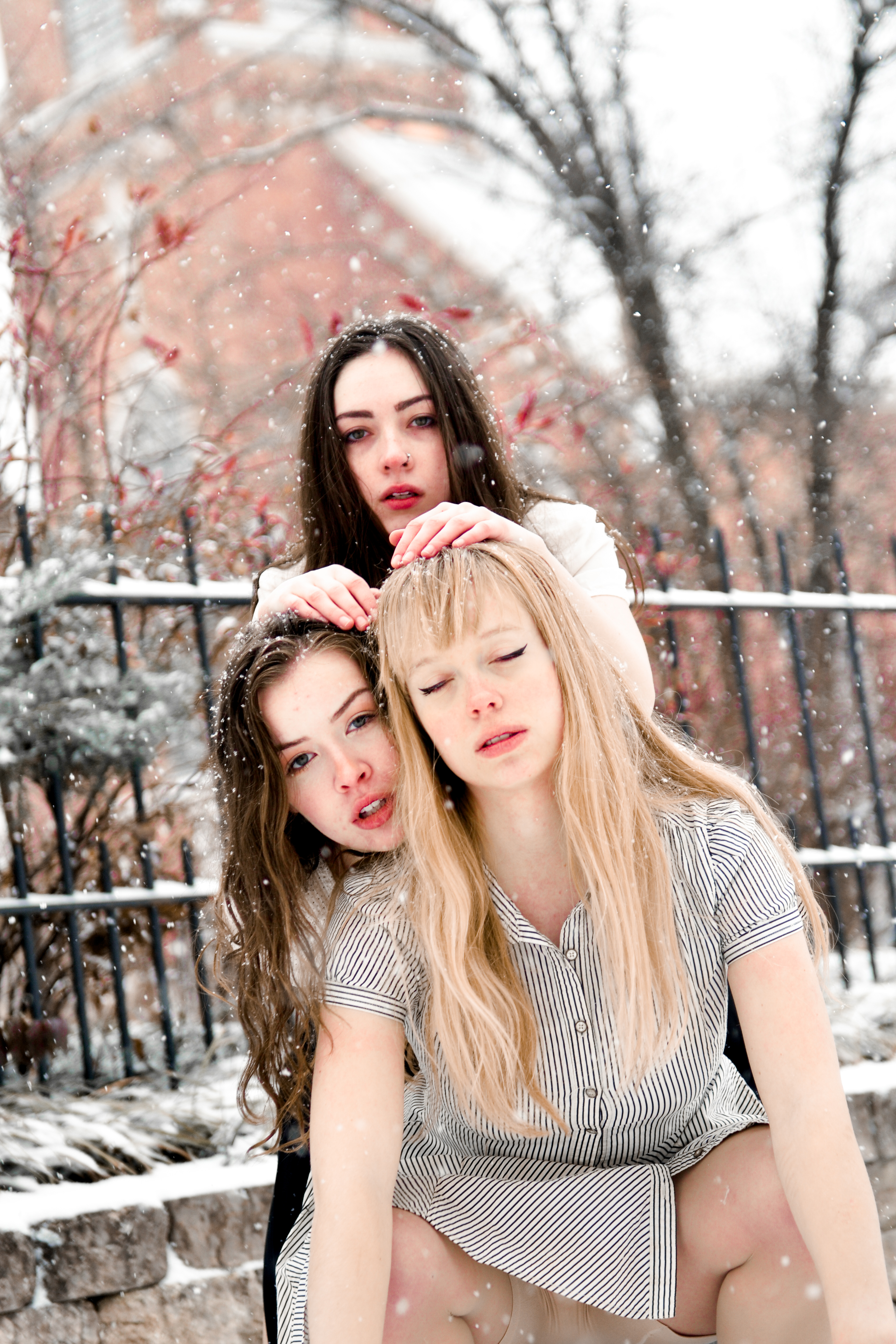
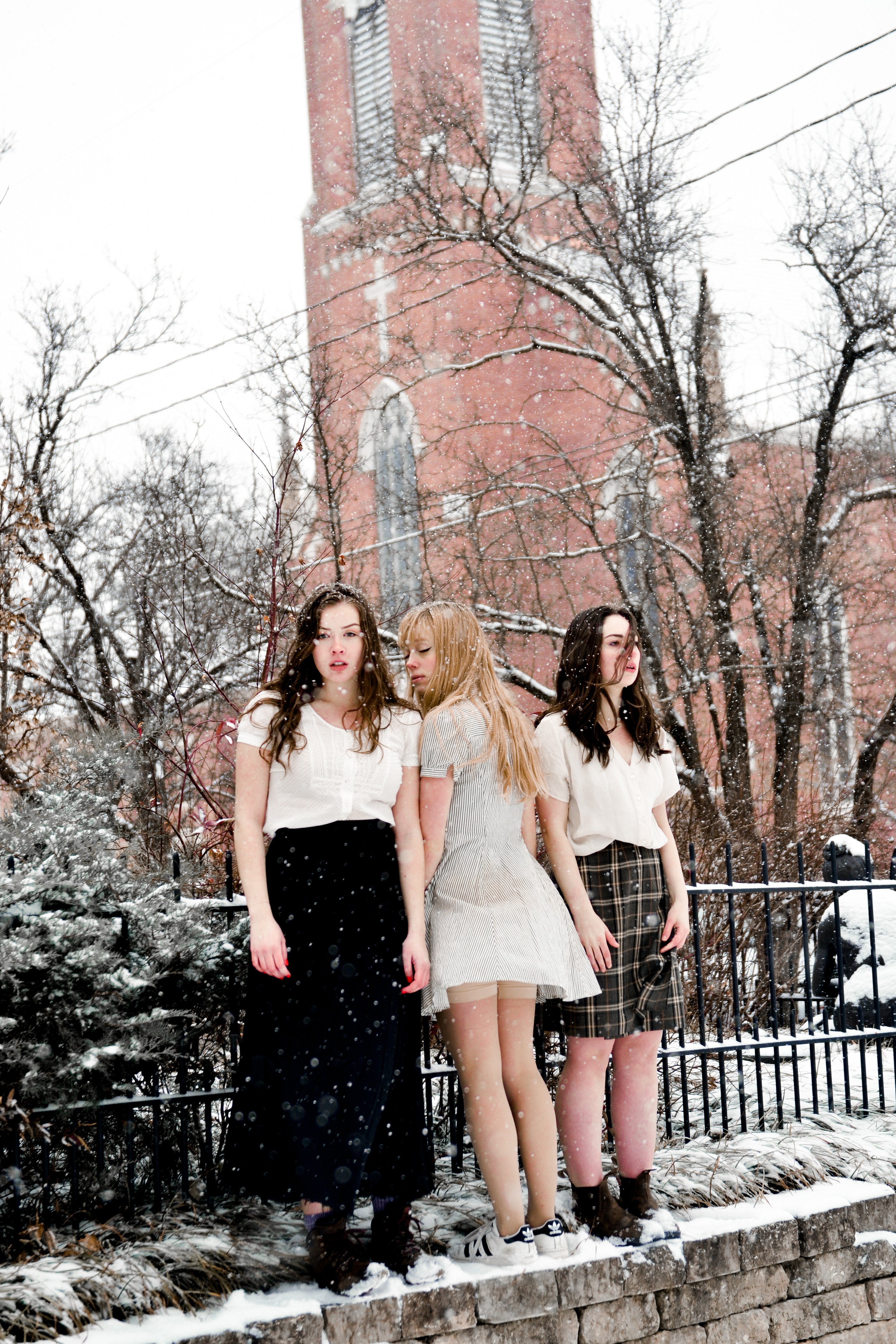
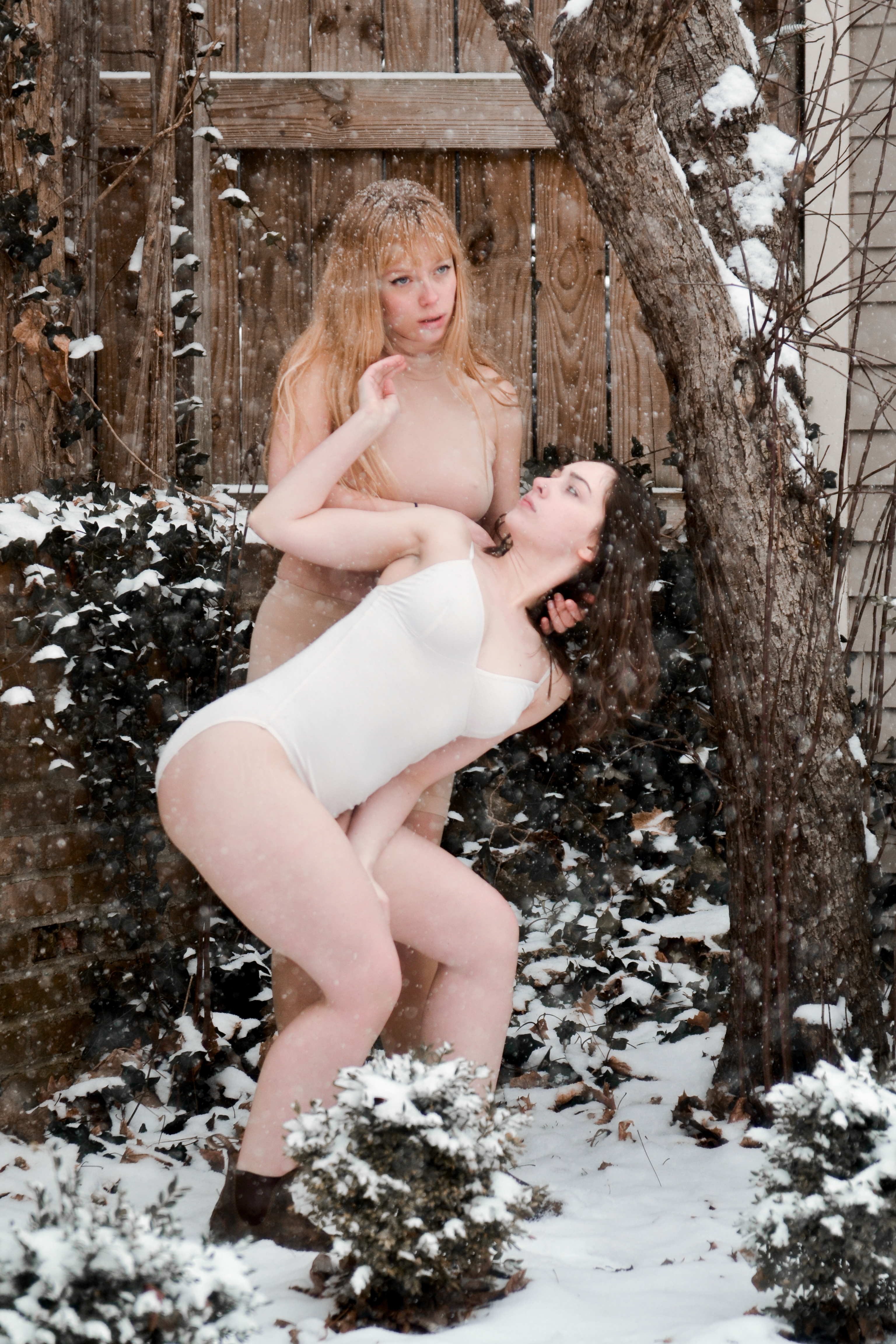
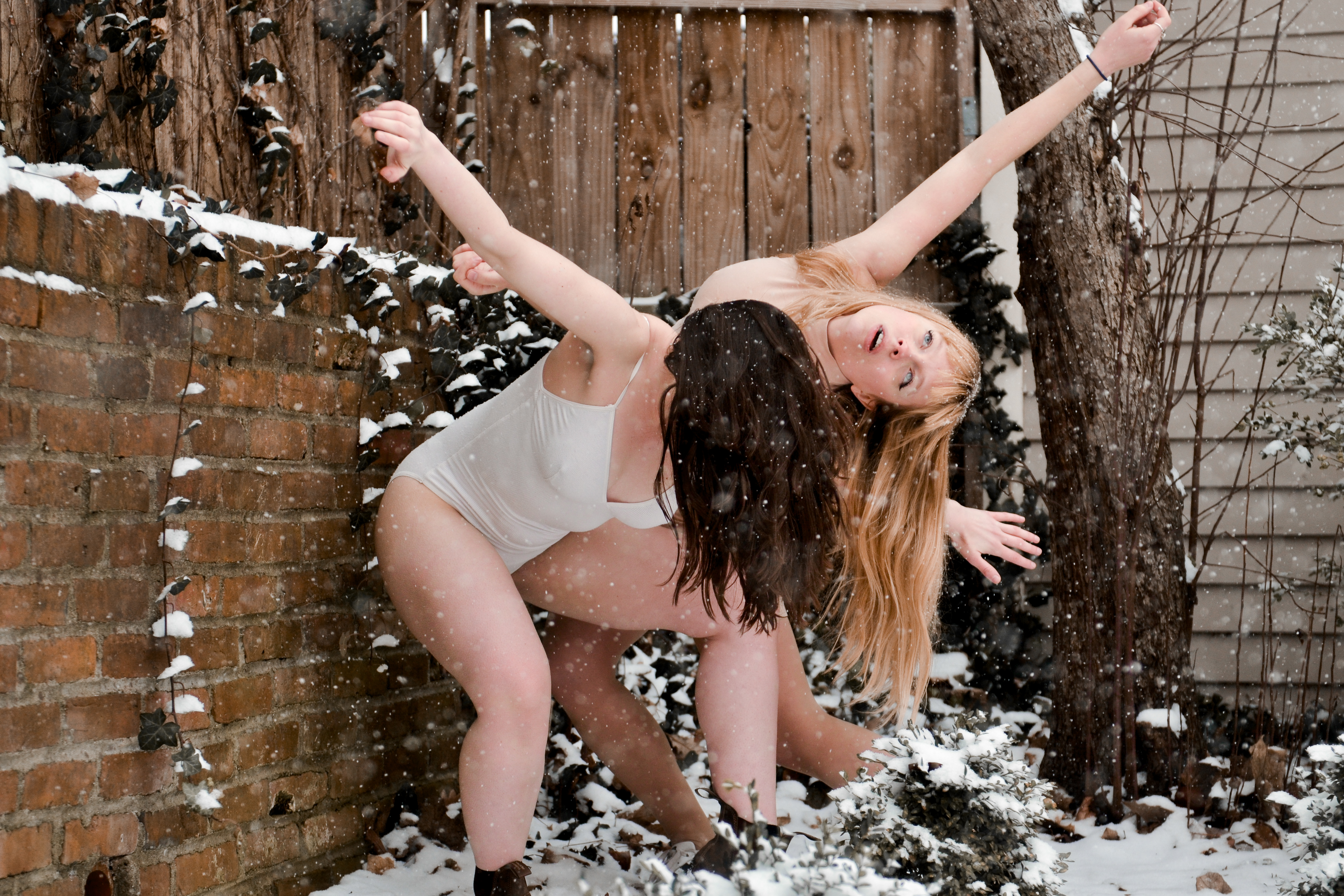

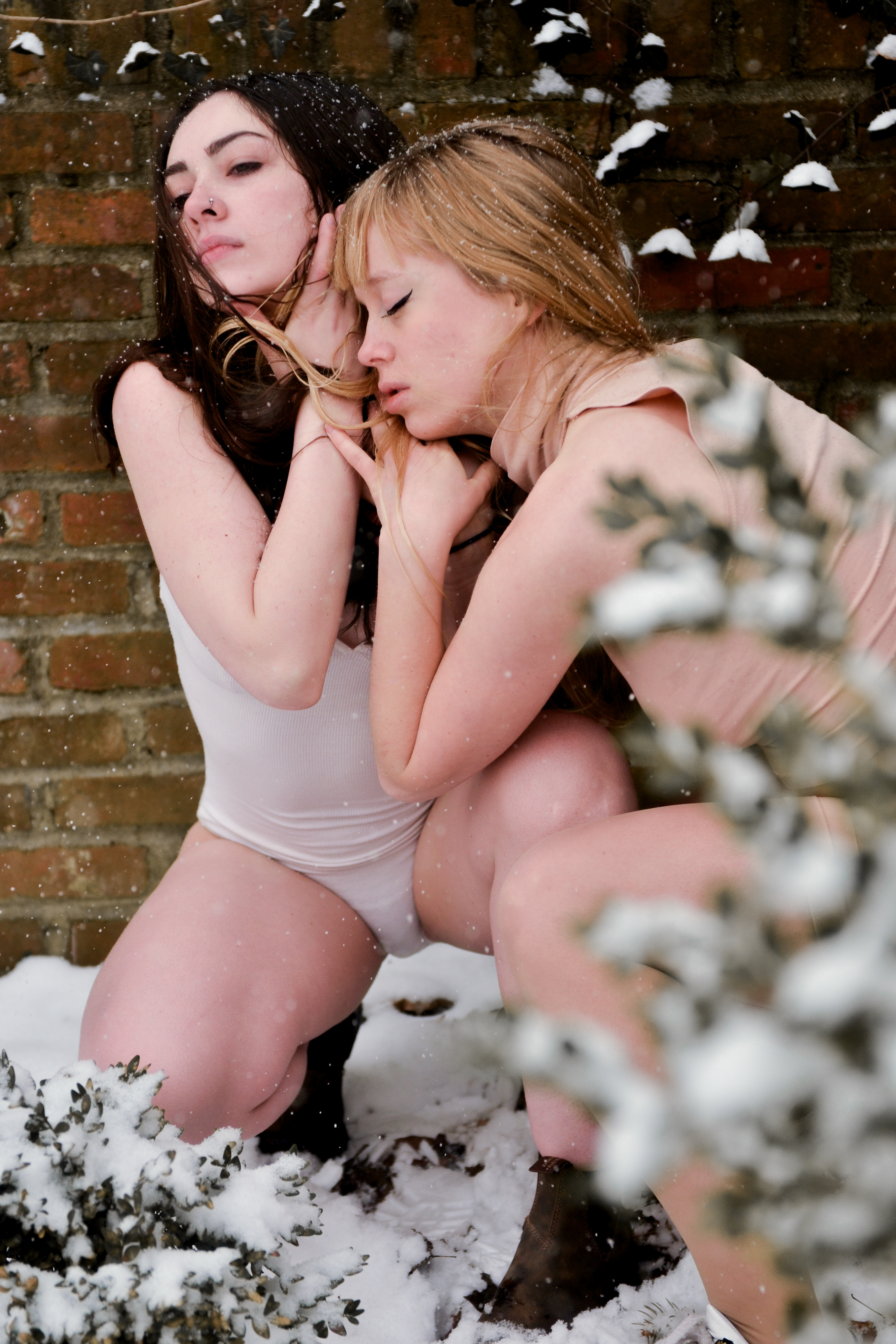


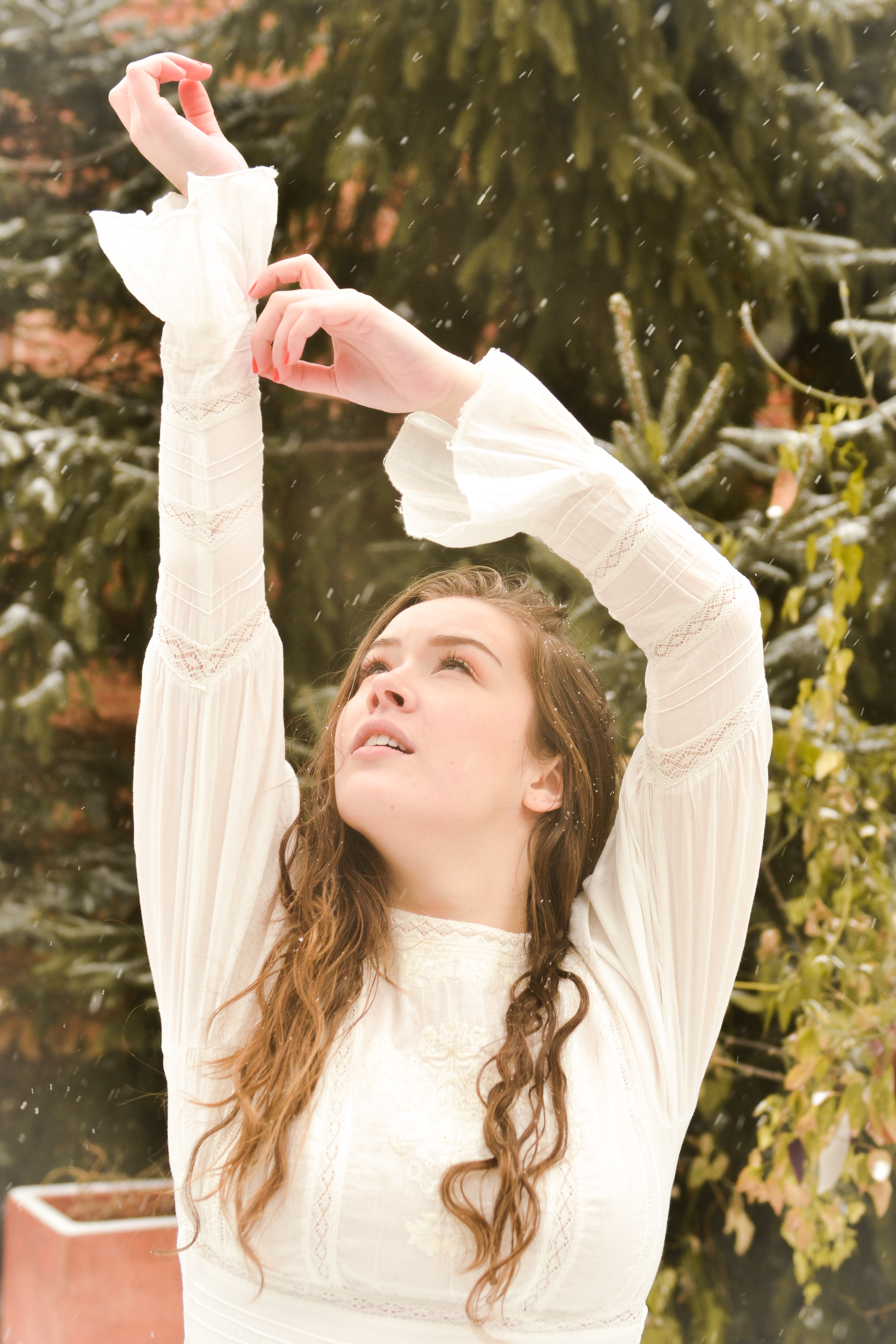

GALLERY
Choreography
The Worst of the Best of Us
Created in Collaboration with Josh Anderson
Just Say Yes
February 2018
Preserved, Revered, in Whole
February 2017
Tif
December 2016
Four Thoughts on Marvin Gaye
October 2016
Post Memoriam
Title: Post Memoriam: Dancing Narrative of World War II
Author: Laura DeAngelis
Advisors: Hannah Kosstrin (chair), Susan Hadley (committee member)
Institution:The Ohio State University, Department of Dance; Distinction Thesis for a BFA in Dance, April 15, 2019
Background
Post Memoriam, a multimedia performance piece, explores a narrative arc of World War II. It is a work set with eleven dancers in an immersive, alternative space that bridges dance, theater, video, and photography. Post Memoriam amalgamates my studies as a dance artist and historian. Every aspect of the dance and space respond to the most important lessons I learned about World War II through intense immersion. Post Memoriam exists at the intersection of academic research, archived personal histories, and travels, to produce an unflinching work that confronts the reconciliation and contemporary resonances of the Second World War.
Description of the Research
This project began with my coursework. Courses included History of the Holocaust, History of World War II, Transnational Histories of World War II in Europe, a research seminar on World War I, and Democracy, Fascism and German Culture. It is difficult to analyze historical nuisance without understanding evidence, and these courses gave me that necessary breadth of knowledge. In this past year, as I began to understand how important all of those classes were, I began to actively pursue incorporating lessons from them into my work. For example, I used a Jay Winter quote for publicity and programs that said, “In effect, after 1945 poetry is an act of defiance, a quixotic refusal to descend into silence.” I found the quote in Winter’s book Sites of Memory, Sites of Mourning I read for Bruno Cabanes’ World War I Research Seminar. Therefore, these classes manifested importance in the work as they informed my intellect parallel to the creation process.
The readings I did for individual research informed me on the complicity within the dance medium itself, and how to work with and against that fact. The largest takeaway was that dance as I understand it takes many roots in Ausdruckstanz, whose German expressive dance practitioners, such as Rudolf Laban, Mary Wigman, and Gret Paluccia, developed a complicated relationship with the Third Reich. Whether it owes to egos or self-preservation, these complicities are elaborated in Lilian Karina’s Hitler’s Dancers. Further research in Jonathan Petroupolus’s Artists Under Hitler informed me that dance artists were not alone, and many artists took stances on Nazism that are questionable through the eyes of contemporary historians. Many musicians like Wagner or painters like Emile Nolde actively strived to find their place under National Socialism. A concept that stuck with me throughout the creation process was Rudolf Laban’s movement choirs, which leaned into the Nazi military aesthetic of perfect unison and sacrifice of the self to the group. Throughout my dance I actively avoided using complete unison. Even in the final section, I constantly instructed the dancers to take their own individual interpretations of the movement, even when it was theoretically in perfect unison. I added a unison part in the quartet concerning bystanders and complicity to put the concept of falling into step and the desire to belong in front of the audience. As a choreographer and rehearsal director, I made the effort to be inclusive of viewpoints and understanding of each dancer’s life and situations. I actively remember that Wigman expelled Jewish students in 1933, long before mandated by the Reich, constantly in the back of my mind. I accessed a balance between empathy and professionalism to subvert the often-exploited hierarchical environment that can occur and be exploited in the rehearsal environment.
The book The Texture of Memory by James E. Young informed me about traditional Jewish Holocaust memorialization and memorial tropes that occasionally cause contention. I learned that no memorial goes up without a fight. Young’s book gave me concrete ideas. Different forms of text are popular memorialization tools. This gave me the idea to use my grandfather’s primary source letter as the text for the first section to directly link this artistic response to memory. Additionally, as a student of these events who is neither Jewish nor German by heritage, it was incredibly important to me to research the Jewish perspective of memory thoroughly. Through this book I learned about ideas of Jewish iconography like the use of trees, and so I inserted a gestural plucking motion into the final section of my work. I added the same gesture to the duet to recall the Nazi disrespect and exploitation of Jewish culture. I also learned how important it is for contemporary Jews to advocate Jewish strength through memory. The latter agency given to dancers comes through from this idea as well. Dancers hold strong, confrontational focuses not only in the last section but throughout the work. They refuse to take the roll of victim despite the narrative circumstances in which the dance places them.
The readings also helped me shape the work’s non-dance elements. Artists Under Hitler prompted my music choices. Paul Hindemith, the composer for the music I used in the duet section, was a Weimar era composer who strived to find his place in the Third Reich. He failed because he did not prioritize race when selecting musicians to work with, and therefore was associated with many so-called “degenerate” musicians. His willingness to concede to Nazism was not out of ideology, but ego and self-preservation. Regardless, I consider him to be complicit. I chose his music for the duet because I think he is exemplary of the most dangerous form of Nazism, which is the kind that can be coerced through means extraneous of ideology. Hindemith is not an example of an aggressively active Nazi, but an example of the masses who used agency and chose to accept National Socialism because it was the easy thing to do.
Finally, the readings as a collective inspired me to capitalize on the human medium of the work. I came to see that dance as a corporeal medium forces the audience to stare into the eyes of another human being and confront their own complicity. Jens Richard Giersdorf’s The Body of the People prompted thoughts about the communal power of dance in response to communism, and how it was used as a means to unite. Giersdorf discusses Sasha Waltz’s Allee der Kosmonauten which I saw on its original stage when I was in Berlin. Giersdorf postulates on the work’s abstract translation of the East German family onto the stage. The human form makes the portrayal literal and present, and therefore Waltz’s abstract generalizations of the East German family can be perceived as two-dimensional and unrelatable. I thought about how different a body of performers reads than a painting or even a photo or video of humans. It is more present and more real, and therefore carries so much more weight. The human body cannot be anything but literal. Furthermore, in Hitler’s Dancers Karina repeatedly talks about the ephemerality which often allowed dance to evade Nazi bureaucratic control. The human medium is present, corporeal and literally representational. This gives dance an inherently evasive and subversive nature. Therefore, I engaged my dancers’ faces and focuses repeatedly to both emphasize their humanity as well as to reflect back on the Ausdruckstanz tradition in sections that were meant to be set in history. I flipped the orientation of the room, so that the audience was in close proximity to the dancers, for the performance to bring the bodies closer to the audience in a more confrontational manner. The final section includes the dancers wearing clothing that suggests nudity, calling attention to skin. Skin is symbolic of emotionally and physically stripped concentration camp prisoners. Skin itself as the first layer of the human body was exploited by Nazis through tattooing and appropriation of skin to goods after murder. Skin is also a reference to nudity, bringing the audience uncomfortably close to the natural and present human form which was brutally attacked.
Anna Sokolow’s Dreams influenced my project heavily. Sokolow’s work truly helped me contextualize this work in the larger field of dance. I watched Dreams after I was already underway choreographing my piece, and noticed some inherent similarities unintentionally constructed. Like my project, Sokolow’s work was episodic. She used similar motifs that I used to reference the Ausdruckstanz, like the use of dramatic faces. Dramatic faces were a popular aesthetic element across German Expressionist media, from Edward Munch’s The Scream to the film The Cabinet of Dr. Caligari. After I already choreographed Margaret Garland creeping her fingers over two other dancers’ shoulders, I noticed the exact same thing happen in Sokolow’s work. The latter points did not really affect how I went on creating, but it certainly prompted me to consider how similar subject matters produce similar aesthetics. I now frequently see art concerning mutual subject matters and can’t help but notice similarities. This opened up a new area of interest for me. To help me move forward, I was inspired by Dreams’ continuity in costumes and movement vocabulary to create one succinct world. I was independently creating a comprehensive movement vocabulary before watching Dreams, but this work inspired the transition into the final section of my work. Dancers Kathleen Greer and Emily Kilroy strip their clothes on stage and perform an improvisational duet in which Greer’s braids are undone and they manipulated each other’s hair. I chose to keep Greer’s costume the same in the preceding quartet as that which was in the film, making the temporality even more nebulous than it is already rendered by the live spoken-word.
Donald Byrd’s Theater of Needless Talents influenced how I viewed the roles of each dancer in the work and how the work situates itself in contemporary times. I saw the value of many principles he was working with while not necessarily liking or agreeing with their employment. Firstly, he used text to integrate Holocaust statistics into his work. The use of statistics seemed too brazen but nevertheless encouraged me to employ the temporally nebulous quotes from contemporary fascist rallies into the quartet section. Two quotes from Byrd about his work stood out to me throughout my process. “We can’t make it be World War II; we are looking at World War II from the prism of our own experience.” He goes on to elaborate that art cannot recreate the war, but rather simulate the experience of it. He goes on to say, “The dancers can only be who they are, but when they are in the then space, they can access part of the then” (Byrd). All of the latter speaks to the contemporary resonances of historiography employed in the quartet and the film. We are not just grappling with history, but also with how we understand, accept, and hold responsibility for history as contemporary students of these events. The dancers exist as themselves and are constantly working through something, be it war or memory, as a community of artists.
Mine and the dancers’ family histories informed the narrative arc of my dance. What I found most satisfying about this part of the process was the capacity to educate and unify. It was a beautiful thing to see that because of my work, on the first day of rehearsal, many of the dancers were on their phones with their parents and grandparents. Not only is it nice to see families commune, but I also saw each dancer learn something new about where they came from. Over the course of fall semester, dancers learned new things about their genealogies. Kali Czekaj learned that her name is the town her family is from in Poland, and that her great grandmother actively hid Jews in Germany. Margaret Garland learned about the shocking number of awards and recognitions her great grandfather received from the U.S. Army. It sparked conversations between dancers and their parents about how to grapple with complicated pasts in a way I never expected. Coal Rietenbach engaged in conversation with his father about his grandfather’s involvement with the Nazi party, and how his complicity or lack thereof should best be discussed. These are exactly the dialogues I set out to encourage from the beginning. This research element taught me about the educational and communal powers of dancemaking that will be invaluable to me beyond my time in school.
Finally, my experiences on the World War II Study Abroad Program and the work I made there are the epicenter of my research. Not only was the film I created in Berlin a lynchpin of my dance’s narrative, but the lessons I learned about the international pervasiveness of nationalism and right-wing diatribe in contemporary society became the conceptual umbrella over the work. One of the strongest takeaways from my time researching abroad was the nationalist nuisances and undertones that colored the way any nation understands their own history. The title of the quartet, “Suivre les Ordres,” means “to follow orders.” I employed the French language in attempt to balance the apparently Germany-first focus that was emerging in the work. In the six days I spent in France I was struck by the subtle ways in which the French evaded blame and blew their own heroism out of proportion. I returned to the United States with a new eye to the way we talk about our own history and nation. I decided that the spread of right-wing nationalism in our own country could not be avoided.
On a concrete level, my experiences abroad became the primary source basis which aesthetically colored the work. While overseas, I recorded my own improvisational phrases kinesthetically informed by place and live histories. This movement evolved into choreography which fit with the work’s narrative. The original movement bases for “To Liberate” came from scores conducted on-site at Utah beach in Normandy. Likewise, the movement in “To Conquer” is based on similar kinesthetic experiments from the Topography of Terror in Berlin, and the movement for the final memorial from Mémorial des Martyrs de la Déportation in Paris. The photos I took in Europe composed a third of the gallery I mounted to the wall of the performance space, structuring the entire aesthetic connotation of the transformed space in studio 270. I additionally obtained primary source journals from my peer Riki Shenekar who is Orthodox Jewish and has a grandmother who survived Auschwitz. Her generously recorded emotional responses became a significant component of my research into the Jewish experience that I am not genealogically linked to. My travels allowed me to experience the war’s history in a very corporeal way, and the kinesthetic resonances continue to vibrate me and almost entirely colored Post Memoriam. My communion with these sites along with research on their respective artistic constructions produced an eclectic synthesis of creative historical remembrance.
Critical Analysis of the Work
The performance began as the audience entered the space to a gallery of photos and a video montage to set the tone of the work. The idea behind the montage at the beginning came from John Davidson’s German Fascism in Culture class. We learned about film works of New Objectivity from the latter part of the Weimar era. New Objectivity emphasized montage for disorientation and recreations of reality. I appropriated this technique to straddle the temporality of my studies by montaging videos from history, videos from today, and videos of the dancers synthesizing these ideas through their movement. This class along with David Steigerwald’s Transnational History of World War II in Europe class forced me to study film specifically, including propaganda, documentation, and artistic responses. Through these courses I was inspired to include a vast array of works in the montage such as Leni Riefenstahl’s Nazi propaganda piece Triumph of the Will and Frank Capra’s American propaganda piece Why We Fight. I studied both in my own research and through my traditional coursework.
Along with travel photos, the gallery consisted of dance film stills and media from a photo and video shoot conducted with dancers Margaret Garland, Kathleen Greer and Emily Kilroy on a snowy day in German Village in Columbus, Ohio. This side experiment proved to be an unexpected research source. The aesthetic combination of dancers performing in a pedestrian context outside the studio brought up ideas reflected in the final production that I would not have otherwise considered. Aesthetic elements like clothes and hair, which are historically prominent in Holocaust symbolism and memorialization, became something I capitalized on in the transition to the final section. The relationship between these surface level elements and the humans who performed them rose out of this shoot. Additionally, the snowy conditions necessitated a certain amount of trust and vulnerability between me and the dancers. This sense of mutual respect was something I tried actively to achieve through my entire creating process, and the resulting videos and photos attest to the powerful performance that such a relationship can elicit. The latter elements were also eventually incorporated into the gallery and larger atmosphere we created in the studio performance.
In respect to the dance work itself, the first two sections become about synthesizing the archived histories into a narrative structure. The opening section, “To Liberate,” concerns the American experience of the war with an overarching consideration of my grandfather’s experiences through his and my grandmothers’ stories. Under that umbrella, I was influenced by dancers who represented a blood legacy of the mass of men drafted into the American war effort. Emily Kilroy espoused pride and her family’s literal mark on history. Kilroy’s great grandfather worked as a ship inspector, and his doodle of a man looking over a fence saying “Kilroy Was Here” on unpainted boats earned fame. His mark came to symbolize the prideful, youthful face of the American war effort. I was also struck by dancer Margaret Garland’s great grandmother’s synthesis of her grandfather’s experiences. When she called her grandmother to ask her about their genealogical legacy, her grandmother’s first comment was that her husband’s enlistment from Rochester, New York “left three little boys at home.” Her story spoke to the domestic face of World War II in the United States, which was marked by uncertainty and abandonment. Distance created an additional fear element, as news from the front could only come slowly. As I pieced together this information, I constantly considered the lens of my own history. I actively remembered my grandfather telling me about the connections he made fighting in Europe. He would postulate his disdainful feelings about the French, and warmly remember the French woman who gave him rosary beads during his time in Normandy. He talked about spending two weeks in a fox hole and talked about his love for his family. Therefore, this section exists at the intersection of pride, fear and abandonment. Many audience members asked me why the use of performative terror was so heavy in this section, and I answer that war is torture for everyone. War transcends the divisive narrative of nationalism which I comment on through the rest of the work.
The duet “To Conquer” came together because the dancers both shared family histories that complicatedly aligned themselves to National Socialism. Like the stories of many I read about through my research, they were neither completely innocent nor entirely evil. They are prime examples of the moral gray area in which most German citizens found themselves. Through the duet I sought to explore the reasons why an entire nation turned an obediently blind eye to the horrors of Nazism. The narrative progresses through the national sentiments Nazis appealed to, like family protection, a desire for a sense of belonging and the subtle employment of fear and threat. Especially because both dancers are male presenting, Nazi appeals to homo-comradery and masculinity as a crux of gendered socialization in the Third Reich emerged through the duet. Nazis valued traditional masculinity and pushed male bonds to the extent of military comradeship. Anything beyond that breached into one of the social questions in Germany that extended from the Kaiserreich years before World War I, all the way through both world wars, which is the homosexuality question. The dance performed by two men, employing militant unison and intimate partnering, straddled the very fragile Nazi standards for gender.
The quartet “Suivre les Ordres” is an exploration of history through people less personally connected through bloodlines. The unifying factor of the work is collective memory, and how it is inherited by everyone in contemporary society detached from nationality. The time period is made nebulous by the dresses and braids that transcend period styles. The work came to incorporate my experiences in dance-theater hybrid work in an unexpected way as elaborated on in my analysis of Donald Byrd’s work. I chose to use music by composer Giddeon Klein who was imprisoned at the Terezin concentration camp. He created music with atonality, which is evident in the piece I used. I found in Artists Under Hitler that atonality was at the epicenter of German Expressionist music which was denounced as degenerate. To produce such work as a detained artist suggests implicit subversion, which also exists in the grey area of resistance. The entire moral spectrum of World War II exists within this section.
The film following “Suivre les Ordres” titled Erbschuld, set at the Memorial for the Murdered Jews of Europe in Berlin, Germany, congeals with dancer Kathleen Greer as the narrative pivot point, and more importantly, as a critical collaborator in this process. Universal human guilt funnels to the specifics of German guilt, and how it is both pressed against and leaned into. The German term that synthesizes this concept is vergungenheitsbewältigung. After vising Auschwitz-Birkenau in Krakow, Poland, Greer and I both conducted journal entries recording our kinesthetic responses to visiting the world’s most horrible display of human cruelty. Greer’s journal resulted in a linear narrative of reconciliation that begins with ignorance, works through anger, and concludes in acceptance. In performance, Greer recited a monologue from The Investigation by Peter Weiss. The Investigation is a dramatic reconstruction of the Frankfurt War Crime Trials and suggests a defensive stance on German complicity. We were at first torn between this monologue and a poem which takes a more apologetic stance on the war. The reason we decided on Weiss’s sample was that our travels confirmed the prevalence of this sort of historical processing.
The final section, “To Commemorate,” includes all eleven dancers in skin-colored clothes to suggest nudity, with loose hair as means of Holocaust memorialization. The memorial is inspired by the site at which we created Erbschuld, which was The Memorial for the Murdered Jews of Europeby Peter Eisenman. The uniform spacing and parred down unison movement is inspired by Eisenman’s intentionally monochrome and disorienting architecture. Flipping the orientation of the work to be wider and closer to the audience gave viewers a similar disorienting and sobering experience elicited by walking through the Eisenman memorial. I also employed Jewish iconography through gestures in an effort to respect those I sought to remember. I also included a dynamic, unison supine flip at the end of the work which references a room at Auschwitz which struck me intensely. The room held humans in a sort of purgatory which was so compact that guards timed when every prisoner was allowed to turn over in their sleep. The image choreographed imprisoned flesh resonates with the dance medium potently.
Significance
Post Memoriam as a project is a testament to the alternative forms traditional historical research can take. The work’s foundation is concrete historical research in which takeaways naturally emerged. The breadth of arts and humanities research allowed me to consider what I wanted to say with this work because of my research, and the creative agency to decide how I wanted to say it. The transdisciplinary medium allowed Post Memoriam to access a wider audience than if I were working independently in one field or the other. I brought new audiences to dance, while opening the minds of dancers to concepts that are taken advantage of as run of the mill narrative in the history field. This powerful amalgamation inspired our group slogan “arts research is real research.” The work we do is not only academically valid, but reaches real people across fields, transcending traditional circles of discourse.
Results and significances of this project extend beyond the performance itself. The three weeks I spent studying World War II in Europe holds an incredible amount of significance to both this project and my life. I believe the ways in which my experiences impacted my life showed through the work brightly. The power and love I felt in those three weeks, and the amount which it made me care so deeply about my fellow human, are the reasons why I cared so much about the process of recording it through artistic expression. The work was not only for the message I wanted to send, but for the love of all of the new people from around the world who inspired me. From the Normandy beaches to the Adriatic coast in Italy, through the academic trip and all tangential travels, I also felt a newly revived significance of family values. Studying and travelling where my family lived, loved, lost, and still exists put me in closer touch to my roots than any previous experience. To know that all of my grandparents were not only touched by, but heroic in World War II on the European front, instills pride in me and invigorates me with the power of all the great people who came before me.
My friendship with Kathleen Greer is a less academic but nevertheless important result of this project that is worth mentioning. Greer and I found that our interests in complicity and radical art-making harmonized well together. The creation process of Erbschuld, from a 4:45am metro ride in Berlin to late nights practicing German, holds a very special place in my heart. I argue that I can owe a large part of Erbschuld’s success, as well as the success of this larger work, to Greer’s wonderful collaboration. This new friendship is an unexpected reward from this project, as well as an affirmation of the social power of artmaking.
Implication for Future Goals
A significant experiment I conducted through this project was making and self-producing work. I experienced the nuts and bolts of art-making like grant writing. I worked collaboratively and professionally with people of different expertise for elements like video production and learned the nuisances of working civilly through diplomacy. This was more than just practice being a choreographer, but also practice being a director. So much of the work I did happened outside of the studio and outside of the confines of dance making. While it was tedious, difficult, and often frustrating, I am blown away by how rewarding doing this kind of work is. I loved every bit of the struggle and fight that came with this project. Seeing my vision and research come to life by the skin of my own teeth and the essential love and support of those around me is so incredibly satisfying. For a long time now, I knew that my love for dance exists in making, and the dream of being an independent artist or artistic director of my own work was always present. This dream has always scared me. Post Memoriam both confirmed to me the amount of work that comes with this dream, but also reassured me that this is work that I love to do. Because of willpower, just maybe I can do it.
Simply put, I loved this project. I loved every bit of the work and all of the people in my life for and because of it. I am incredibly grateful for all of the support I received on this work by friends and advisors and am so happy that their presences in my life are stronger because of it. Two weeks later, I am finding it hard to say goodbye to this research. Sadness, joy, and fear are all components of reconciliation with all these years of work. Regardless, I cannot think of a better way to have finished out four transformative years at school. Beyond that, this project is proof of the educational and communicative power that exists uniquely in radical art making.
This work was an important message to audiences about the cyclically sinister impulses of man, and functions as a creative warning in our contemporary environment.
Works Cited
Czekaj, Kali. Journal entry. 2018. In author’s possession.
Battle, Robert. No Longer Silent. New York City, The Juilliard School, 2007. https://www.youtube.com/watch?v=TZ-ug3qY8o4. Accessed August 2018.
Byrd, Donald. The Theater of Needless Talents: Donald Byrd Blog 2. Spectrum Dance, Sept. 2012, spectrumdance.org/theater-of-needless-talents-2012/. Accessed September 2018.
Eisenman, Peter. Memorial for the Murdered Jews of Europe. April 1, 2003, 0AD, Berlin, Germany. Visited May 2018.
Garland, Margaret. Journal entry. 2018. In author’s possession.
Giersdorf, Jens Richard. The Body of the People: East German Dance since 1945. The University of Wisconsin Press, 2013.
Greer, Kathleen. Journal entry. 2018. In author’s possession.
Hindemith, Paul. Sonata for Viola and Piano No. 4 Op.11: 1. Phantasie. Kim Kashkashian and Robert Levin, ECM Records GmbH, 1986.
Jones, Bill T. “A Letter to My Nephew.” New York City, Brooklyn Academy of Music. October 3-7, 2017. https://www.bam.org/dance/2017/a-letter-to-my-nephew. Accessed August 2018.
Karina, Lilian, et al. Hitler's Dancers: German Modern Dance and the Third Reich. Berghahn Books, 2003.
Kilroy, Emily. Journal entry. 2018. In author’s possession.
Klein, Giddeon. Piano Sonata, PA 9': II. Adagio. Holocaust Remembrance “Before Sleep,” Renan Koen, 2015.
Paradiso, Angelo. letter. Letter to Laura and Michelle DeAngelis. 1999. In author’s possession.
Petropoulos, Jonathan. Artists under Hitler: Collaboration and Survival in Nazi Germany. Yale University Press, 2015.
Rietenbach, Coal. journal entry. 2019. In author’s possession.
Sokolow, Anna. “Dreams.” Creative Arts Televvision DBA Aviva Films Ltd. 1977. fod.infobase.com/p_ViewVideo.aspx?xtid=124227. Accessed September 2018.
Waltz, Sasha. “Allee Der Kosmonauten.” Berlin, Radialsystem V Berlin. Performance, May 25, 2018.
Weiss, Peter. Investigation. Dramatic, 1999.
Winter, Jay. Sites of Memory, Sites of Mourning the Great War in European Cultural History. Cambridge Univ. Press, 2014.
Yatkin, Nejla. “The Berlin Wall Project.” 2009. http://ny2dance.com/projects/view/Berlin-Wall/media. Accessed September 2018.
Young, James Edward. The Texture of Memory: Holocaust Memorials and Meaning. Yale U. Press, 2000.
Author: Laura DeAngelis
Advisors: Hannah Kosstrin (chair), Susan Hadley (committee member)
Institution:The Ohio State University, Department of Dance; Distinction Thesis for a BFA in Dance, April 15, 2019
Background
Post Memoriam, a multimedia performance piece, explores a narrative arc of World War II. It is a work set with eleven dancers in an immersive, alternative space that bridges dance, theater, video, and photography. Post Memoriam amalgamates my studies as a dance artist and historian. Every aspect of the dance and space respond to the most important lessons I learned about World War II through intense immersion. Post Memoriam exists at the intersection of academic research, archived personal histories, and travels, to produce an unflinching work that confronts the reconciliation and contemporary resonances of the Second World War.
Description of the Research
This project began with my coursework. Courses included History of the Holocaust, History of World War II, Transnational Histories of World War II in Europe, a research seminar on World War I, and Democracy, Fascism and German Culture. It is difficult to analyze historical nuisance without understanding evidence, and these courses gave me that necessary breadth of knowledge. In this past year, as I began to understand how important all of those classes were, I began to actively pursue incorporating lessons from them into my work. For example, I used a Jay Winter quote for publicity and programs that said, “In effect, after 1945 poetry is an act of defiance, a quixotic refusal to descend into silence.” I found the quote in Winter’s book Sites of Memory, Sites of Mourning I read for Bruno Cabanes’ World War I Research Seminar. Therefore, these classes manifested importance in the work as they informed my intellect parallel to the creation process.
The readings I did for individual research informed me on the complicity within the dance medium itself, and how to work with and against that fact. The largest takeaway was that dance as I understand it takes many roots in Ausdruckstanz, whose German expressive dance practitioners, such as Rudolf Laban, Mary Wigman, and Gret Paluccia, developed a complicated relationship with the Third Reich. Whether it owes to egos or self-preservation, these complicities are elaborated in Lilian Karina’s Hitler’s Dancers. Further research in Jonathan Petroupolus’s Artists Under Hitler informed me that dance artists were not alone, and many artists took stances on Nazism that are questionable through the eyes of contemporary historians. Many musicians like Wagner or painters like Emile Nolde actively strived to find their place under National Socialism. A concept that stuck with me throughout the creation process was Rudolf Laban’s movement choirs, which leaned into the Nazi military aesthetic of perfect unison and sacrifice of the self to the group. Throughout my dance I actively avoided using complete unison. Even in the final section, I constantly instructed the dancers to take their own individual interpretations of the movement, even when it was theoretically in perfect unison. I added a unison part in the quartet concerning bystanders and complicity to put the concept of falling into step and the desire to belong in front of the audience. As a choreographer and rehearsal director, I made the effort to be inclusive of viewpoints and understanding of each dancer’s life and situations. I actively remember that Wigman expelled Jewish students in 1933, long before mandated by the Reich, constantly in the back of my mind. I accessed a balance between empathy and professionalism to subvert the often-exploited hierarchical environment that can occur and be exploited in the rehearsal environment.
The book The Texture of Memory by James E. Young informed me about traditional Jewish Holocaust memorialization and memorial tropes that occasionally cause contention. I learned that no memorial goes up without a fight. Young’s book gave me concrete ideas. Different forms of text are popular memorialization tools. This gave me the idea to use my grandfather’s primary source letter as the text for the first section to directly link this artistic response to memory. Additionally, as a student of these events who is neither Jewish nor German by heritage, it was incredibly important to me to research the Jewish perspective of memory thoroughly. Through this book I learned about ideas of Jewish iconography like the use of trees, and so I inserted a gestural plucking motion into the final section of my work. I added the same gesture to the duet to recall the Nazi disrespect and exploitation of Jewish culture. I also learned how important it is for contemporary Jews to advocate Jewish strength through memory. The latter agency given to dancers comes through from this idea as well. Dancers hold strong, confrontational focuses not only in the last section but throughout the work. They refuse to take the roll of victim despite the narrative circumstances in which the dance places them.
The readings also helped me shape the work’s non-dance elements. Artists Under Hitler prompted my music choices. Paul Hindemith, the composer for the music I used in the duet section, was a Weimar era composer who strived to find his place in the Third Reich. He failed because he did not prioritize race when selecting musicians to work with, and therefore was associated with many so-called “degenerate” musicians. His willingness to concede to Nazism was not out of ideology, but ego and self-preservation. Regardless, I consider him to be complicit. I chose his music for the duet because I think he is exemplary of the most dangerous form of Nazism, which is the kind that can be coerced through means extraneous of ideology. Hindemith is not an example of an aggressively active Nazi, but an example of the masses who used agency and chose to accept National Socialism because it was the easy thing to do.
Finally, the readings as a collective inspired me to capitalize on the human medium of the work. I came to see that dance as a corporeal medium forces the audience to stare into the eyes of another human being and confront their own complicity. Jens Richard Giersdorf’s The Body of the People prompted thoughts about the communal power of dance in response to communism, and how it was used as a means to unite. Giersdorf discusses Sasha Waltz’s Allee der Kosmonauten which I saw on its original stage when I was in Berlin. Giersdorf postulates on the work’s abstract translation of the East German family onto the stage. The human form makes the portrayal literal and present, and therefore Waltz’s abstract generalizations of the East German family can be perceived as two-dimensional and unrelatable. I thought about how different a body of performers reads than a painting or even a photo or video of humans. It is more present and more real, and therefore carries so much more weight. The human body cannot be anything but literal. Furthermore, in Hitler’s Dancers Karina repeatedly talks about the ephemerality which often allowed dance to evade Nazi bureaucratic control. The human medium is present, corporeal and literally representational. This gives dance an inherently evasive and subversive nature. Therefore, I engaged my dancers’ faces and focuses repeatedly to both emphasize their humanity as well as to reflect back on the Ausdruckstanz tradition in sections that were meant to be set in history. I flipped the orientation of the room, so that the audience was in close proximity to the dancers, for the performance to bring the bodies closer to the audience in a more confrontational manner. The final section includes the dancers wearing clothing that suggests nudity, calling attention to skin. Skin is symbolic of emotionally and physically stripped concentration camp prisoners. Skin itself as the first layer of the human body was exploited by Nazis through tattooing and appropriation of skin to goods after murder. Skin is also a reference to nudity, bringing the audience uncomfortably close to the natural and present human form which was brutally attacked.
Anna Sokolow’s Dreams influenced my project heavily. Sokolow’s work truly helped me contextualize this work in the larger field of dance. I watched Dreams after I was already underway choreographing my piece, and noticed some inherent similarities unintentionally constructed. Like my project, Sokolow’s work was episodic. She used similar motifs that I used to reference the Ausdruckstanz, like the use of dramatic faces. Dramatic faces were a popular aesthetic element across German Expressionist media, from Edward Munch’s The Scream to the film The Cabinet of Dr. Caligari. After I already choreographed Margaret Garland creeping her fingers over two other dancers’ shoulders, I noticed the exact same thing happen in Sokolow’s work. The latter points did not really affect how I went on creating, but it certainly prompted me to consider how similar subject matters produce similar aesthetics. I now frequently see art concerning mutual subject matters and can’t help but notice similarities. This opened up a new area of interest for me. To help me move forward, I was inspired by Dreams’ continuity in costumes and movement vocabulary to create one succinct world. I was independently creating a comprehensive movement vocabulary before watching Dreams, but this work inspired the transition into the final section of my work. Dancers Kathleen Greer and Emily Kilroy strip their clothes on stage and perform an improvisational duet in which Greer’s braids are undone and they manipulated each other’s hair. I chose to keep Greer’s costume the same in the preceding quartet as that which was in the film, making the temporality even more nebulous than it is already rendered by the live spoken-word.
Donald Byrd’s Theater of Needless Talents influenced how I viewed the roles of each dancer in the work and how the work situates itself in contemporary times. I saw the value of many principles he was working with while not necessarily liking or agreeing with their employment. Firstly, he used text to integrate Holocaust statistics into his work. The use of statistics seemed too brazen but nevertheless encouraged me to employ the temporally nebulous quotes from contemporary fascist rallies into the quartet section. Two quotes from Byrd about his work stood out to me throughout my process. “We can’t make it be World War II; we are looking at World War II from the prism of our own experience.” He goes on to elaborate that art cannot recreate the war, but rather simulate the experience of it. He goes on to say, “The dancers can only be who they are, but when they are in the then space, they can access part of the then” (Byrd). All of the latter speaks to the contemporary resonances of historiography employed in the quartet and the film. We are not just grappling with history, but also with how we understand, accept, and hold responsibility for history as contemporary students of these events. The dancers exist as themselves and are constantly working through something, be it war or memory, as a community of artists.
Mine and the dancers’ family histories informed the narrative arc of my dance. What I found most satisfying about this part of the process was the capacity to educate and unify. It was a beautiful thing to see that because of my work, on the first day of rehearsal, many of the dancers were on their phones with their parents and grandparents. Not only is it nice to see families commune, but I also saw each dancer learn something new about where they came from. Over the course of fall semester, dancers learned new things about their genealogies. Kali Czekaj learned that her name is the town her family is from in Poland, and that her great grandmother actively hid Jews in Germany. Margaret Garland learned about the shocking number of awards and recognitions her great grandfather received from the U.S. Army. It sparked conversations between dancers and their parents about how to grapple with complicated pasts in a way I never expected. Coal Rietenbach engaged in conversation with his father about his grandfather’s involvement with the Nazi party, and how his complicity or lack thereof should best be discussed. These are exactly the dialogues I set out to encourage from the beginning. This research element taught me about the educational and communal powers of dancemaking that will be invaluable to me beyond my time in school.
Finally, my experiences on the World War II Study Abroad Program and the work I made there are the epicenter of my research. Not only was the film I created in Berlin a lynchpin of my dance’s narrative, but the lessons I learned about the international pervasiveness of nationalism and right-wing diatribe in contemporary society became the conceptual umbrella over the work. One of the strongest takeaways from my time researching abroad was the nationalist nuisances and undertones that colored the way any nation understands their own history. The title of the quartet, “Suivre les Ordres,” means “to follow orders.” I employed the French language in attempt to balance the apparently Germany-first focus that was emerging in the work. In the six days I spent in France I was struck by the subtle ways in which the French evaded blame and blew their own heroism out of proportion. I returned to the United States with a new eye to the way we talk about our own history and nation. I decided that the spread of right-wing nationalism in our own country could not be avoided.
On a concrete level, my experiences abroad became the primary source basis which aesthetically colored the work. While overseas, I recorded my own improvisational phrases kinesthetically informed by place and live histories. This movement evolved into choreography which fit with the work’s narrative. The original movement bases for “To Liberate” came from scores conducted on-site at Utah beach in Normandy. Likewise, the movement in “To Conquer” is based on similar kinesthetic experiments from the Topography of Terror in Berlin, and the movement for the final memorial from Mémorial des Martyrs de la Déportation in Paris. The photos I took in Europe composed a third of the gallery I mounted to the wall of the performance space, structuring the entire aesthetic connotation of the transformed space in studio 270. I additionally obtained primary source journals from my peer Riki Shenekar who is Orthodox Jewish and has a grandmother who survived Auschwitz. Her generously recorded emotional responses became a significant component of my research into the Jewish experience that I am not genealogically linked to. My travels allowed me to experience the war’s history in a very corporeal way, and the kinesthetic resonances continue to vibrate me and almost entirely colored Post Memoriam. My communion with these sites along with research on their respective artistic constructions produced an eclectic synthesis of creative historical remembrance.
Critical Analysis of the Work
The performance began as the audience entered the space to a gallery of photos and a video montage to set the tone of the work. The idea behind the montage at the beginning came from John Davidson’s German Fascism in Culture class. We learned about film works of New Objectivity from the latter part of the Weimar era. New Objectivity emphasized montage for disorientation and recreations of reality. I appropriated this technique to straddle the temporality of my studies by montaging videos from history, videos from today, and videos of the dancers synthesizing these ideas through their movement. This class along with David Steigerwald’s Transnational History of World War II in Europe class forced me to study film specifically, including propaganda, documentation, and artistic responses. Through these courses I was inspired to include a vast array of works in the montage such as Leni Riefenstahl’s Nazi propaganda piece Triumph of the Will and Frank Capra’s American propaganda piece Why We Fight. I studied both in my own research and through my traditional coursework.
Along with travel photos, the gallery consisted of dance film stills and media from a photo and video shoot conducted with dancers Margaret Garland, Kathleen Greer and Emily Kilroy on a snowy day in German Village in Columbus, Ohio. This side experiment proved to be an unexpected research source. The aesthetic combination of dancers performing in a pedestrian context outside the studio brought up ideas reflected in the final production that I would not have otherwise considered. Aesthetic elements like clothes and hair, which are historically prominent in Holocaust symbolism and memorialization, became something I capitalized on in the transition to the final section. The relationship between these surface level elements and the humans who performed them rose out of this shoot. Additionally, the snowy conditions necessitated a certain amount of trust and vulnerability between me and the dancers. This sense of mutual respect was something I tried actively to achieve through my entire creating process, and the resulting videos and photos attest to the powerful performance that such a relationship can elicit. The latter elements were also eventually incorporated into the gallery and larger atmosphere we created in the studio performance.
In respect to the dance work itself, the first two sections become about synthesizing the archived histories into a narrative structure. The opening section, “To Liberate,” concerns the American experience of the war with an overarching consideration of my grandfather’s experiences through his and my grandmothers’ stories. Under that umbrella, I was influenced by dancers who represented a blood legacy of the mass of men drafted into the American war effort. Emily Kilroy espoused pride and her family’s literal mark on history. Kilroy’s great grandfather worked as a ship inspector, and his doodle of a man looking over a fence saying “Kilroy Was Here” on unpainted boats earned fame. His mark came to symbolize the prideful, youthful face of the American war effort. I was also struck by dancer Margaret Garland’s great grandmother’s synthesis of her grandfather’s experiences. When she called her grandmother to ask her about their genealogical legacy, her grandmother’s first comment was that her husband’s enlistment from Rochester, New York “left three little boys at home.” Her story spoke to the domestic face of World War II in the United States, which was marked by uncertainty and abandonment. Distance created an additional fear element, as news from the front could only come slowly. As I pieced together this information, I constantly considered the lens of my own history. I actively remembered my grandfather telling me about the connections he made fighting in Europe. He would postulate his disdainful feelings about the French, and warmly remember the French woman who gave him rosary beads during his time in Normandy. He talked about spending two weeks in a fox hole and talked about his love for his family. Therefore, this section exists at the intersection of pride, fear and abandonment. Many audience members asked me why the use of performative terror was so heavy in this section, and I answer that war is torture for everyone. War transcends the divisive narrative of nationalism which I comment on through the rest of the work.
The duet “To Conquer” came together because the dancers both shared family histories that complicatedly aligned themselves to National Socialism. Like the stories of many I read about through my research, they were neither completely innocent nor entirely evil. They are prime examples of the moral gray area in which most German citizens found themselves. Through the duet I sought to explore the reasons why an entire nation turned an obediently blind eye to the horrors of Nazism. The narrative progresses through the national sentiments Nazis appealed to, like family protection, a desire for a sense of belonging and the subtle employment of fear and threat. Especially because both dancers are male presenting, Nazi appeals to homo-comradery and masculinity as a crux of gendered socialization in the Third Reich emerged through the duet. Nazis valued traditional masculinity and pushed male bonds to the extent of military comradeship. Anything beyond that breached into one of the social questions in Germany that extended from the Kaiserreich years before World War I, all the way through both world wars, which is the homosexuality question. The dance performed by two men, employing militant unison and intimate partnering, straddled the very fragile Nazi standards for gender.
The quartet “Suivre les Ordres” is an exploration of history through people less personally connected through bloodlines. The unifying factor of the work is collective memory, and how it is inherited by everyone in contemporary society detached from nationality. The time period is made nebulous by the dresses and braids that transcend period styles. The work came to incorporate my experiences in dance-theater hybrid work in an unexpected way as elaborated on in my analysis of Donald Byrd’s work. I chose to use music by composer Giddeon Klein who was imprisoned at the Terezin concentration camp. He created music with atonality, which is evident in the piece I used. I found in Artists Under Hitler that atonality was at the epicenter of German Expressionist music which was denounced as degenerate. To produce such work as a detained artist suggests implicit subversion, which also exists in the grey area of resistance. The entire moral spectrum of World War II exists within this section.
The film following “Suivre les Ordres” titled Erbschuld, set at the Memorial for the Murdered Jews of Europe in Berlin, Germany, congeals with dancer Kathleen Greer as the narrative pivot point, and more importantly, as a critical collaborator in this process. Universal human guilt funnels to the specifics of German guilt, and how it is both pressed against and leaned into. The German term that synthesizes this concept is vergungenheitsbewältigung. After vising Auschwitz-Birkenau in Krakow, Poland, Greer and I both conducted journal entries recording our kinesthetic responses to visiting the world’s most horrible display of human cruelty. Greer’s journal resulted in a linear narrative of reconciliation that begins with ignorance, works through anger, and concludes in acceptance. In performance, Greer recited a monologue from The Investigation by Peter Weiss. The Investigation is a dramatic reconstruction of the Frankfurt War Crime Trials and suggests a defensive stance on German complicity. We were at first torn between this monologue and a poem which takes a more apologetic stance on the war. The reason we decided on Weiss’s sample was that our travels confirmed the prevalence of this sort of historical processing.
The final section, “To Commemorate,” includes all eleven dancers in skin-colored clothes to suggest nudity, with loose hair as means of Holocaust memorialization. The memorial is inspired by the site at which we created Erbschuld, which was The Memorial for the Murdered Jews of Europeby Peter Eisenman. The uniform spacing and parred down unison movement is inspired by Eisenman’s intentionally monochrome and disorienting architecture. Flipping the orientation of the work to be wider and closer to the audience gave viewers a similar disorienting and sobering experience elicited by walking through the Eisenman memorial. I also employed Jewish iconography through gestures in an effort to respect those I sought to remember. I also included a dynamic, unison supine flip at the end of the work which references a room at Auschwitz which struck me intensely. The room held humans in a sort of purgatory which was so compact that guards timed when every prisoner was allowed to turn over in their sleep. The image choreographed imprisoned flesh resonates with the dance medium potently.
Significance
Post Memoriam as a project is a testament to the alternative forms traditional historical research can take. The work’s foundation is concrete historical research in which takeaways naturally emerged. The breadth of arts and humanities research allowed me to consider what I wanted to say with this work because of my research, and the creative agency to decide how I wanted to say it. The transdisciplinary medium allowed Post Memoriam to access a wider audience than if I were working independently in one field or the other. I brought new audiences to dance, while opening the minds of dancers to concepts that are taken advantage of as run of the mill narrative in the history field. This powerful amalgamation inspired our group slogan “arts research is real research.” The work we do is not only academically valid, but reaches real people across fields, transcending traditional circles of discourse.
Results and significances of this project extend beyond the performance itself. The three weeks I spent studying World War II in Europe holds an incredible amount of significance to both this project and my life. I believe the ways in which my experiences impacted my life showed through the work brightly. The power and love I felt in those three weeks, and the amount which it made me care so deeply about my fellow human, are the reasons why I cared so much about the process of recording it through artistic expression. The work was not only for the message I wanted to send, but for the love of all of the new people from around the world who inspired me. From the Normandy beaches to the Adriatic coast in Italy, through the academic trip and all tangential travels, I also felt a newly revived significance of family values. Studying and travelling where my family lived, loved, lost, and still exists put me in closer touch to my roots than any previous experience. To know that all of my grandparents were not only touched by, but heroic in World War II on the European front, instills pride in me and invigorates me with the power of all the great people who came before me.
My friendship with Kathleen Greer is a less academic but nevertheless important result of this project that is worth mentioning. Greer and I found that our interests in complicity and radical art-making harmonized well together. The creation process of Erbschuld, from a 4:45am metro ride in Berlin to late nights practicing German, holds a very special place in my heart. I argue that I can owe a large part of Erbschuld’s success, as well as the success of this larger work, to Greer’s wonderful collaboration. This new friendship is an unexpected reward from this project, as well as an affirmation of the social power of artmaking.
Implication for Future Goals
A significant experiment I conducted through this project was making and self-producing work. I experienced the nuts and bolts of art-making like grant writing. I worked collaboratively and professionally with people of different expertise for elements like video production and learned the nuisances of working civilly through diplomacy. This was more than just practice being a choreographer, but also practice being a director. So much of the work I did happened outside of the studio and outside of the confines of dance making. While it was tedious, difficult, and often frustrating, I am blown away by how rewarding doing this kind of work is. I loved every bit of the struggle and fight that came with this project. Seeing my vision and research come to life by the skin of my own teeth and the essential love and support of those around me is so incredibly satisfying. For a long time now, I knew that my love for dance exists in making, and the dream of being an independent artist or artistic director of my own work was always present. This dream has always scared me. Post Memoriam both confirmed to me the amount of work that comes with this dream, but also reassured me that this is work that I love to do. Because of willpower, just maybe I can do it.
Simply put, I loved this project. I loved every bit of the work and all of the people in my life for and because of it. I am incredibly grateful for all of the support I received on this work by friends and advisors and am so happy that their presences in my life are stronger because of it. Two weeks later, I am finding it hard to say goodbye to this research. Sadness, joy, and fear are all components of reconciliation with all these years of work. Regardless, I cannot think of a better way to have finished out four transformative years at school. Beyond that, this project is proof of the educational and communicative power that exists uniquely in radical art making.
This work was an important message to audiences about the cyclically sinister impulses of man, and functions as a creative warning in our contemporary environment.
Works Cited
Czekaj, Kali. Journal entry. 2018. In author’s possession.
Battle, Robert. No Longer Silent. New York City, The Juilliard School, 2007. https://www.youtube.com/watch?v=TZ-ug3qY8o4. Accessed August 2018.
Byrd, Donald. The Theater of Needless Talents: Donald Byrd Blog 2. Spectrum Dance, Sept. 2012, spectrumdance.org/theater-of-needless-talents-2012/. Accessed September 2018.
Eisenman, Peter. Memorial for the Murdered Jews of Europe. April 1, 2003, 0AD, Berlin, Germany. Visited May 2018.
Garland, Margaret. Journal entry. 2018. In author’s possession.
Giersdorf, Jens Richard. The Body of the People: East German Dance since 1945. The University of Wisconsin Press, 2013.
Greer, Kathleen. Journal entry. 2018. In author’s possession.
Hindemith, Paul. Sonata for Viola and Piano No. 4 Op.11: 1. Phantasie. Kim Kashkashian and Robert Levin, ECM Records GmbH, 1986.
Jones, Bill T. “A Letter to My Nephew.” New York City, Brooklyn Academy of Music. October 3-7, 2017. https://www.bam.org/dance/2017/a-letter-to-my-nephew. Accessed August 2018.
Karina, Lilian, et al. Hitler's Dancers: German Modern Dance and the Third Reich. Berghahn Books, 2003.
Kilroy, Emily. Journal entry. 2018. In author’s possession.
Klein, Giddeon. Piano Sonata, PA 9': II. Adagio. Holocaust Remembrance “Before Sleep,” Renan Koen, 2015.
Paradiso, Angelo. letter. Letter to Laura and Michelle DeAngelis. 1999. In author’s possession.
Petropoulos, Jonathan. Artists under Hitler: Collaboration and Survival in Nazi Germany. Yale University Press, 2015.
Rietenbach, Coal. journal entry. 2019. In author’s possession.
Sokolow, Anna. “Dreams.” Creative Arts Televvision DBA Aviva Films Ltd. 1977. fod.infobase.com/p_ViewVideo.aspx?xtid=124227. Accessed September 2018.
Waltz, Sasha. “Allee Der Kosmonauten.” Berlin, Radialsystem V Berlin. Performance, May 25, 2018.
Weiss, Peter. Investigation. Dramatic, 1999.
Winter, Jay. Sites of Memory, Sites of Mourning the Great War in European Cultural History. Cambridge Univ. Press, 2014.
Yatkin, Nejla. “The Berlin Wall Project.” 2009. http://ny2dance.com/projects/view/Berlin-Wall/media. Accessed September 2018.
Young, James Edward. The Texture of Memory: Holocaust Memorials and Meaning. Yale U. Press, 2000.
